- Strong performance
- An excellent grand touring machine
- Excellent interior quality
- Atrocious fuel economy
- Short service intervals
- Boot could be larger
Contrary to my status as a warm-blooded car enthusiast, I’ve never truly loved the Kia Stinger. Perhaps due to past experiences or maybe not having spent enough time with it, the Stinger is a car that I’ve always respected, but never really loved. While it’s an excellent grand tourer, it’s never really stirred my soul in the way that you think a twin-turbo V6-powered rear-drive sports sedan (it’s really a liftback) would. It launched just as the large Australian sedans died, so with them now an unfortunate distant memory, is the Stinger – the sole remaining rear-drive affordable sports sedan – a better fit with its mid life update? We tested the 2021 Kia Stinger GT to find out.
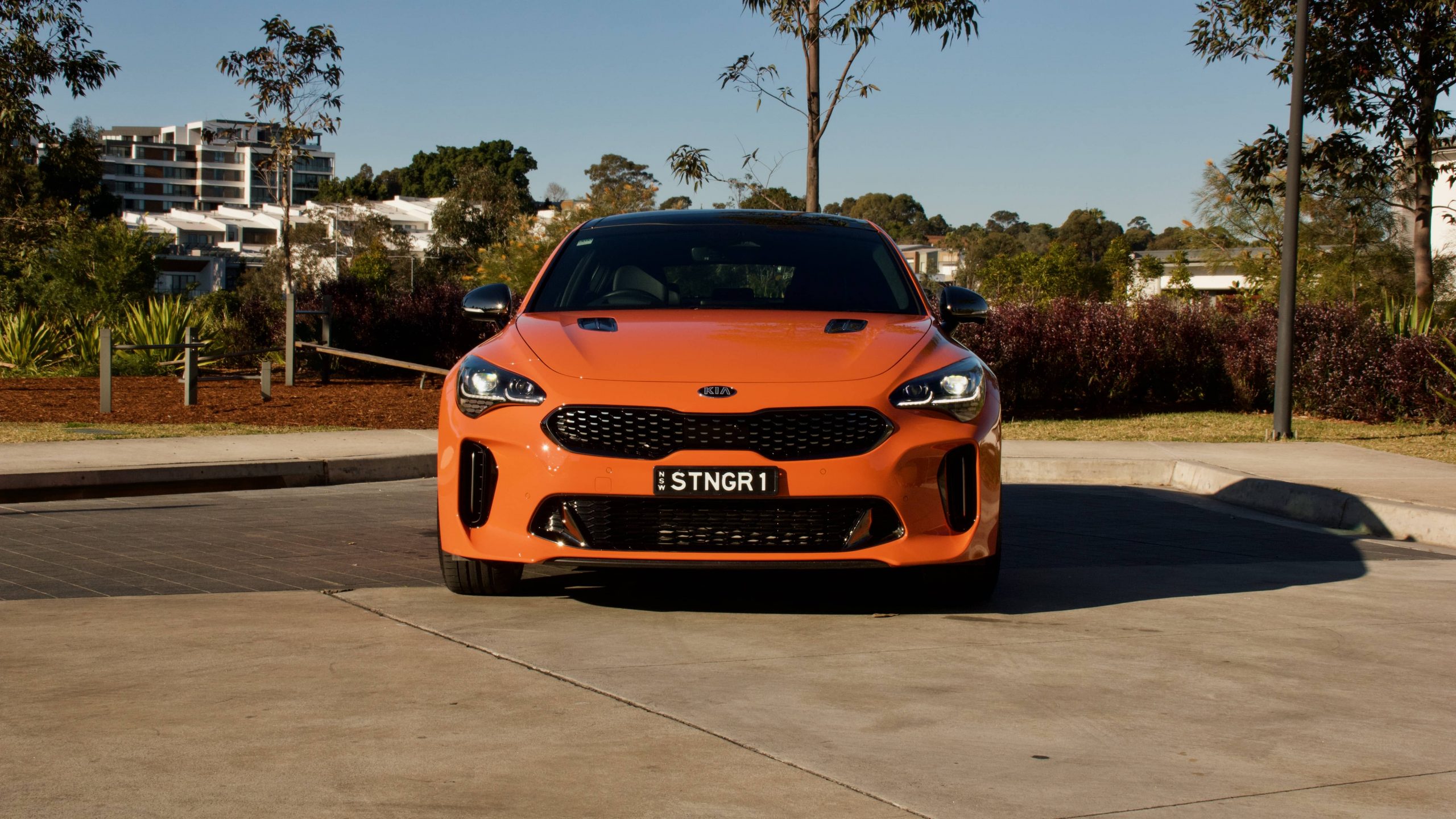
We’ve tested the facelifted Stinger extensively since its release not long ago. Both the entry-level Stinger 200S and GT-Line are fitted with a smaller 2.0-litre turbo petrol engine, whereas the 330S and the GT tested here are fitted with a fire-breathing twin-turbo 3.3-litre V6. All Stinger models in Australia are rear-wheel drive, which gives them a big unique selling point for car enthusiasts – especially in lieu of V8-powered sports sedans that used to be made locally.
Price & Equipment: 9/10
While Stinger models are available from $54,090 drive away, the 2021 Kia Stinger GT we tested is priced at $67,690 drive away. Standard kit on the GT includes 19-inch alloy wheels, Nappa leather upholstery, all-LED lighting, auto lights and wipers, a 10.25-inch touchscreen with satellite navigation with live traffic, digital radio, wired Apple CarPlay and Android Auto, a wireless phone charger, a 15-speaker Harman Kardon sound system, dual-zone climate control, keyless entry and start, heated and auto-folding mirrors, 16-way driver and 8-way passenger electrically adjustable front seats with driver’s memory functionality, heated and ventilated front seats, a heated steering wheel, paddle shifters, a sunroof and an electric tailgate.
Safety kit is extensive with seven airbags, auto emergency braking (AEB) with pedestrian, cyclist and intersection assist, blind-spot monitoring with a blind-spot camera, rear cross-traffic alert, auto rear braking, lane keep assist with lane follow assist, an auto-dimming rear mirror, front and rear parking sensors, a 360-degree parking camera, auto high beam, driver attention alert, rear occupant alert, safe exit assist and an alarm.
Available colours for the Stinger GT includes the no-cost ‘Panthera Metal’ (grey), ‘Silky Silver’, ‘Ceramic Silver’, ‘Hichroma Red’, ‘Micro Blue’ and our test car’s ‘Neon Orange’. $695 extra buys you ‘Aurora Black’, ‘Deep Chroma Blue’ and ‘Snow White Pearl’. Interior colour choices include either black or red leather – the red is unavailable on cars with the orange, red and light blue paint.
To find competitors for the 2021 Kia Stinger GT, you have to look further afield than the traditional rear-wheel drive V8 sedan rivals – mostly because they aren’t there any longer. We consider the $66,990 +ORC Volkswagen Arteon 206TSI and $63,990 drive away Skoda Superb Sportline 206TSI to be the Kia’s biggest rivals. Both those cars are slightly slower than the Kia and finding a performance equivalent in a similar bodystyle, results in the $117,285 drive away Audi S5 Sportback and the $125,237 BMW M440i Gran Coupe. Against these rivals, the Kia is a bargain for the level of performance on offer.
Performance & Economy: 8/10
Under the bonnet of the 2021 Kia Stinger GT is a 274kW/510Nm 3.3-litre twin-turbocharged petrol V6. Pleasing car enthusiasts is its rear-wheel drive layout that’s matched solely to an eight-speed torque-converter automatic transmission. That results in a claimed 0-100km/h sprint time of just 4.9 seconds with a top speed of 270km/h. In reality, it feels even faster than 4.9 seconds once the turbo lag is dealt with – this is a seriously fast car.
Put simply, despite its age, the Stinger’s 3.3-litre twin-turbo V6 engine is a masterpiece. Peak torque lasts from 1,300rpm to 4,500rpm and peak power hits at 6,000rpm and when you’re in sport mode and with your foot on it, that high in the rev range you’re really moving. If you couldn’t tell before, the Stinger is fast. Really fast – especially once the electronics let you floor the throttle. The car’s launch control is easy to use and once you’re off, there’s a slight wiggle of the hips in second gear and after that, the grunt doesn’t really stop. It’s great fun.
Standard on all Stingers is an eight-speed automatic transmission that’s been massaged for the Stinger’s mid-life facelift to be less dopey. It’s more responsive this time around and in manual mode, it doesn’t revert automatically to drive and now won’t upshift automatically at the red line. When you’re on it, it’s much better, though it’s still not perfect – it still loves to upshift half way through corners and like the pre-updated model, it still feels as though there’s a layer of electronics between you and the engine.
One of the issues that we had with the pre-updated Stinger was its [lack of] noise and that’s something that has been worked on but not entirely addressed with the update. There’s a new bi-model system that does make the Stinger sound better when flooring it in sport mode, but it could sound so much better – we’re thinking of amazing sounding six-cylinder engines like Alfa Romeo’s beautiful ‘Busso’ V6, Jaguar’s throaty supercharged V6 and even the Volkswagen Group’s sonorous VR6.
Also not great is the Stinger’s fuel economy. Of course, a big almost-two tonne twin-turbo V6 petrol sports sedan isn’t going to be Prius-like in its fuel consumption. Kia claims 10.2L/100km combined but we achieved 13.4L/100km combined. A highway run resulted in a reasonable 8.2L/100km but in purely urban driving – in lockdown Sydney as well – we achieved 15.6L/100km. Not great… The Stinger features a small 60-litre fuel tank and can run on 91RON fuel, but we recommend using premium unleaded with such a powerful engine.
Ride & Handling: 8/10
It’s a similar story with the ride and handling – there are highs such as the quick and meaty steering, but also lows such as a lack of subtlety when pushing it hard. The steering is quite nice to use as it’s well weighted and surprisingly quick for such a big and heavy car. In tight corners, you never really lose the Stinger’s 1,831kg kerb weight and it can get a bit clumsy. Its standard limited-slip differential adds traction but the stability control panics and shuts the fun down. Some Holden-style subtle engineering polish would help the Stinger’s dynamics even more.
In our opinion, the Stinger GT is at its best on higher-speed country roads where its excellent ride and adjustable chassis allow the car to flow from bend to bend. It covers ground remarkably quickly and while it’s capable of 9/10ths of driving, it feels more natural at, say, 7/10ths. In this regard, it’s much more like the grand tourers that it competes with and less like the V8-powered sports sedans that other media outlets claimed it was replacing upon its release.
Around town, the Stinger GT is excellent. The ride in comfort mode is great – not floaty like some adaptive damper set ups can be – and it firms up noticeably in sport mode that actually makes it a touch too firm around town. The body control is great no matter what the mode is in.
Adding to the Stinger GT’s grand tourer talent are low road noise levels, reasonable visibility and well tuned safety systems, including the lane keep assist that others don’t love but I quite like. Thought of as a grand tourer, rather than an all-out sports sedan, the Stinger GT’s driving experience is excellent.
Interior & Practicality: 9/10
Inside the 2021 Kia Stinger GT is a very positive experience, especially when you consider its pricing. It’s covered in Nappa leather upholstery, a lovely suede headliner, stitched soft-touch materials, lashings of chrome and quality switchgear to make it feel special.
Centre of the Stinger’s cabin is a new 10.25-inch touchscreen that makes it feel more expensive inside than the old 8.0-inch unit. It’s fully featured with inbuilt navigation with live traffic, digital radio and wired Apple CarPlay and Android Auto. It’s also got unique features such as ‘sounds of nature’, which plays sound effects such as rain falling and a wood fire to enhance the ambience. No need in our opinion as the 15-speaker Harman Kardon sound system is excellent with great clarity and good bass levels as well.
Practicality inside the Stinger isn’t bad, though storage could be better. There are reasonable door pockets and cupholders, though the cupholders and storage area below the centre armrest are quite shallow. The wireless phone charger is also hard to access, while the climate control panel feels a bit cheap to use – we wish it was updated in the facelift as well.
As a four-seat grand tourer, the Stinger GT excels. There’s more than enough room in both rows of seats, though the back seat isn’t massive, especially for headroom. But the seats are very comfortable, and the second row features a few creative comforts such as a centre armrest with cupholders, small door pockets, map pockets, vents with a hot/cold temperature controller and both a 12V and USB charging port – though no heated rear seats, nor automatic windows feature.
The boot of the 2021 Kia Stinger GT measures in at 406-litres – not a big figure for the size of the car, but it is long and flat. An Audi S5 Sportback offers a 480L boot, the BMW M440i Gran Coupe 470L, the Volkswagen Arteon 563L and the Skoda Superb a massive 625L. Like those cars, the Stinger’s boot accessed by a liftback tailgate instead of a sedan bootlid, which means that its opening is huge. The rear seats fold almost flat for 1,114L in total – not bad but a Superb offers 1,760L in total. Under the boot floor is a space-saver spare wheel.
Service & Warranty: 8/10
Like the wider Kia range, the Stinger is backed by a seven-year/unlimited-kilometre warranty and 12 months of roadside assist that’s boosted by a further 12 months with each dealer service up to eight years in total. Servicing is required every 12 months or 10,000km, whichever comes first. Five years/50,000km of servicing costs $2,560 with a yearly average of $512 per service.
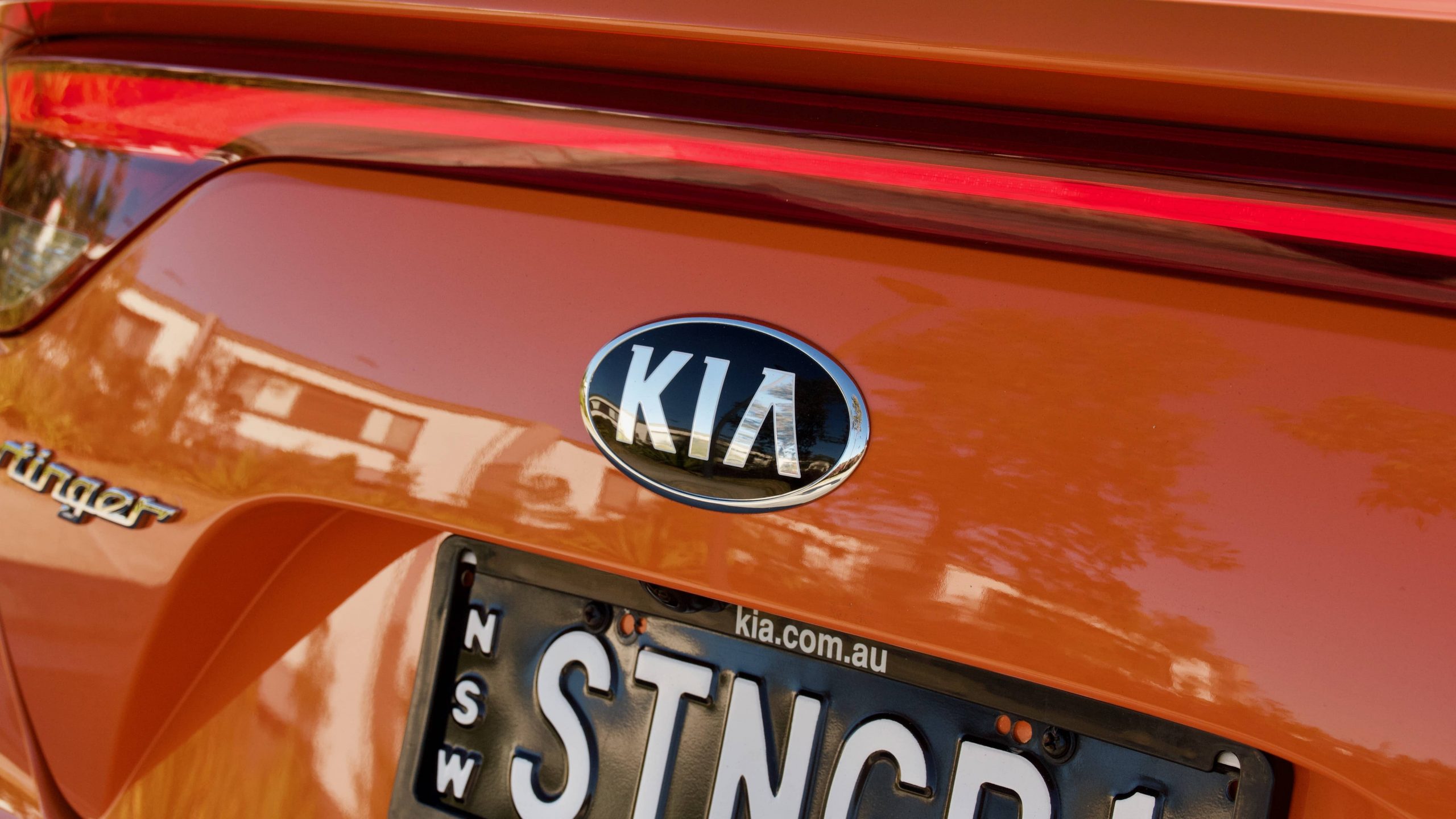
Kia’s warranty is excellent in comparison with almost all other car companies – especially BMW and Audi, which still persist with lacklustre three-year warranties in Australia. Despite featuring shorter 10,000km service intervals, the Stinger GT still looks like good value for servicing – over five years/75,000km, the Arteon costs an insane $3,708 ($741 per service while a service pack is $2,500) and the Superb costs $3,189 ($637 per service while a service pack is $1,700). A five-year/75,000km service pack on the S5 Sportback costs $3,160 ($632 per service) and a five-year/80,000km service pack on the M440i Gran Coupe costs a reasonable $1,750 ($350 per service).
The 2021 Kia Stinger GT DiscoverAuto Rating: 8.4
So am I more positive about the 2021 Kia Stinger GT this time around? Definitely, but it’s still not perfect. On the positives, it’s an attractive, well-made, luxurious-feeling, practical, well-priced and well-equipped car that proves to the world that Kia is more than capable of producing a large and powerful grand tourer. It also features a stonking engine that makes it bloody fast, but it can also be quite thirsty when you’re on it – and the small 60L fuel tank doesn’t help. It also handles fast country roads very well, and it covers ground very quickly.
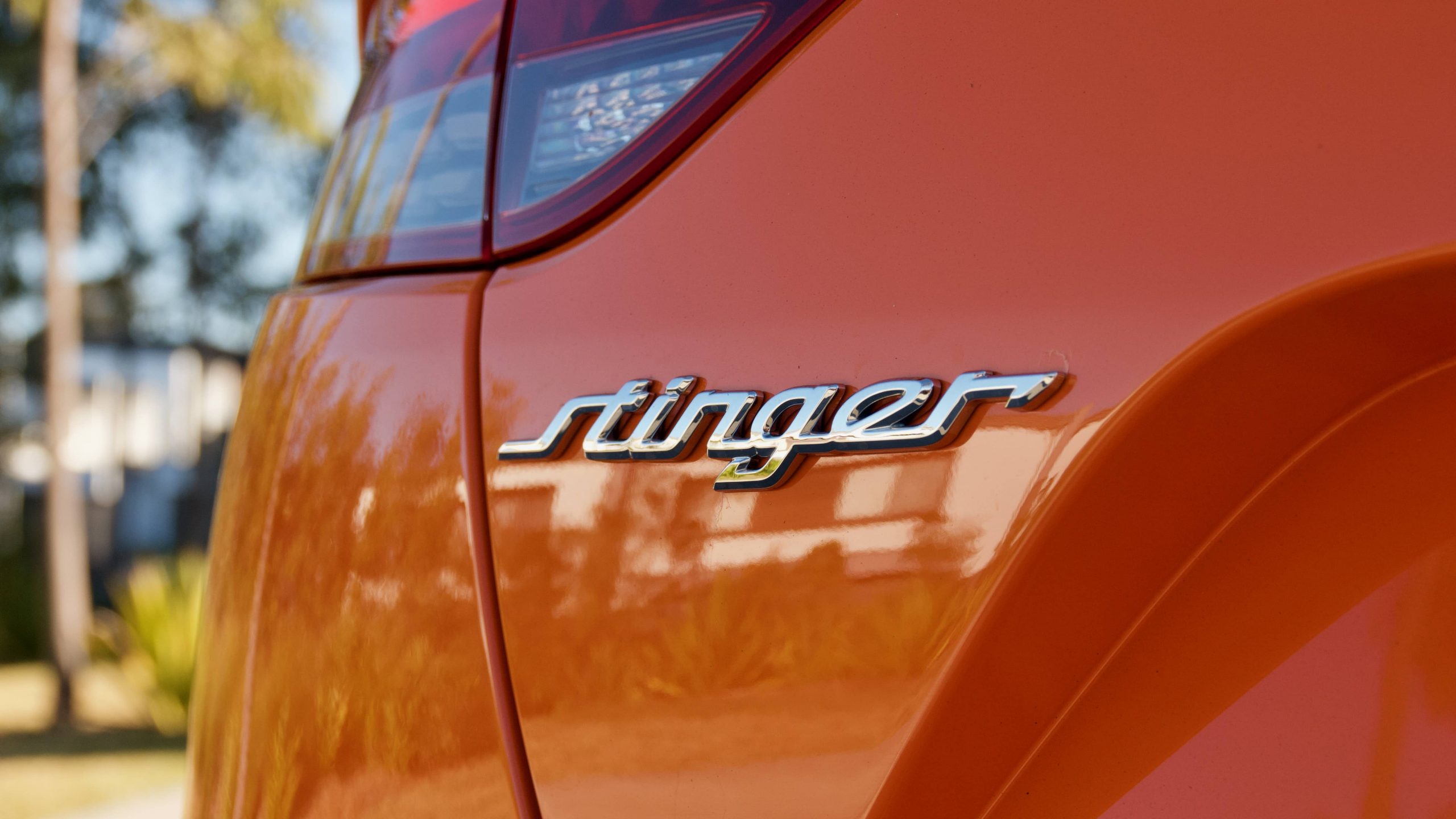
But when considered an all-out sports sedan as it was done when it was released does the Stinger a disservice. It’s not delicate like a Commodore SS could have been, and you can’t really shake its heavy kerb weight, especially in tighter corners where the tyres can be overwhelmed. More tuning for the transmission would be great as well, as its ability to hesitate in corners can be quite frustrating. But measured as a grand tourer, the Stinger GT suddenly moves to the front of the pack as it’s much more dynamic than rivals, but also much better value for money. It’s not perfect, but the 2021 Kia Stinger GT is an excellent car.
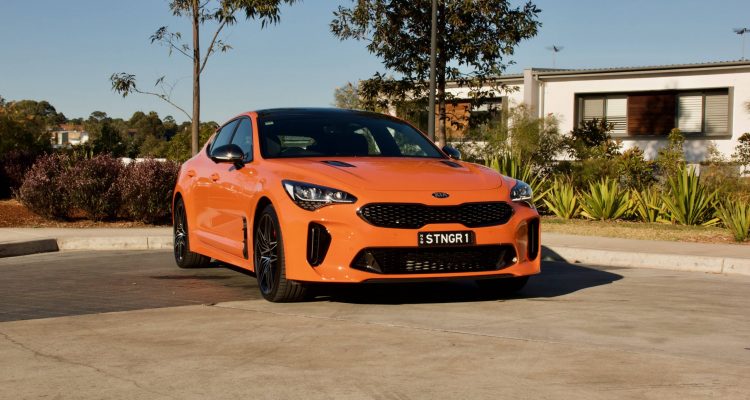
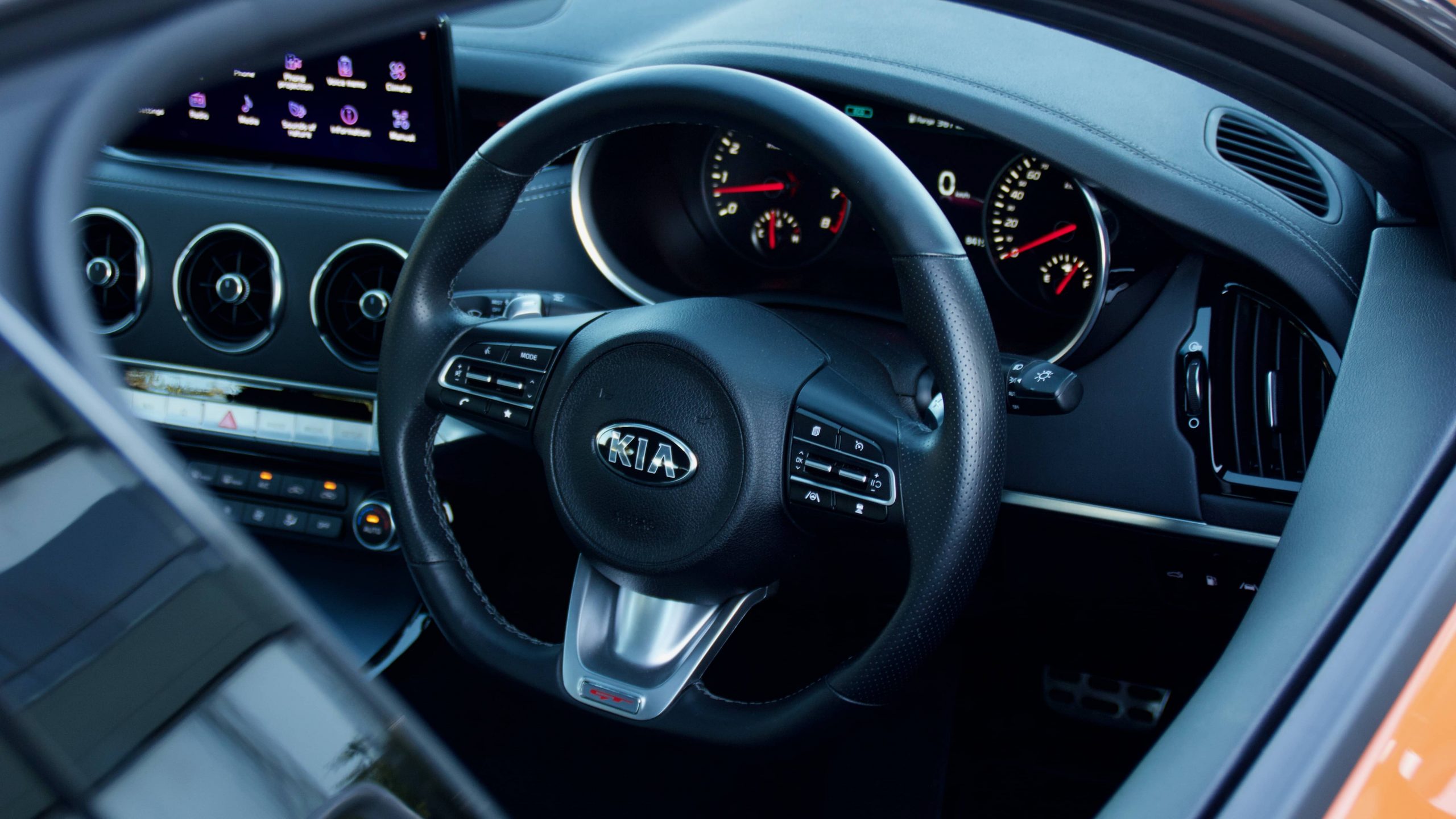
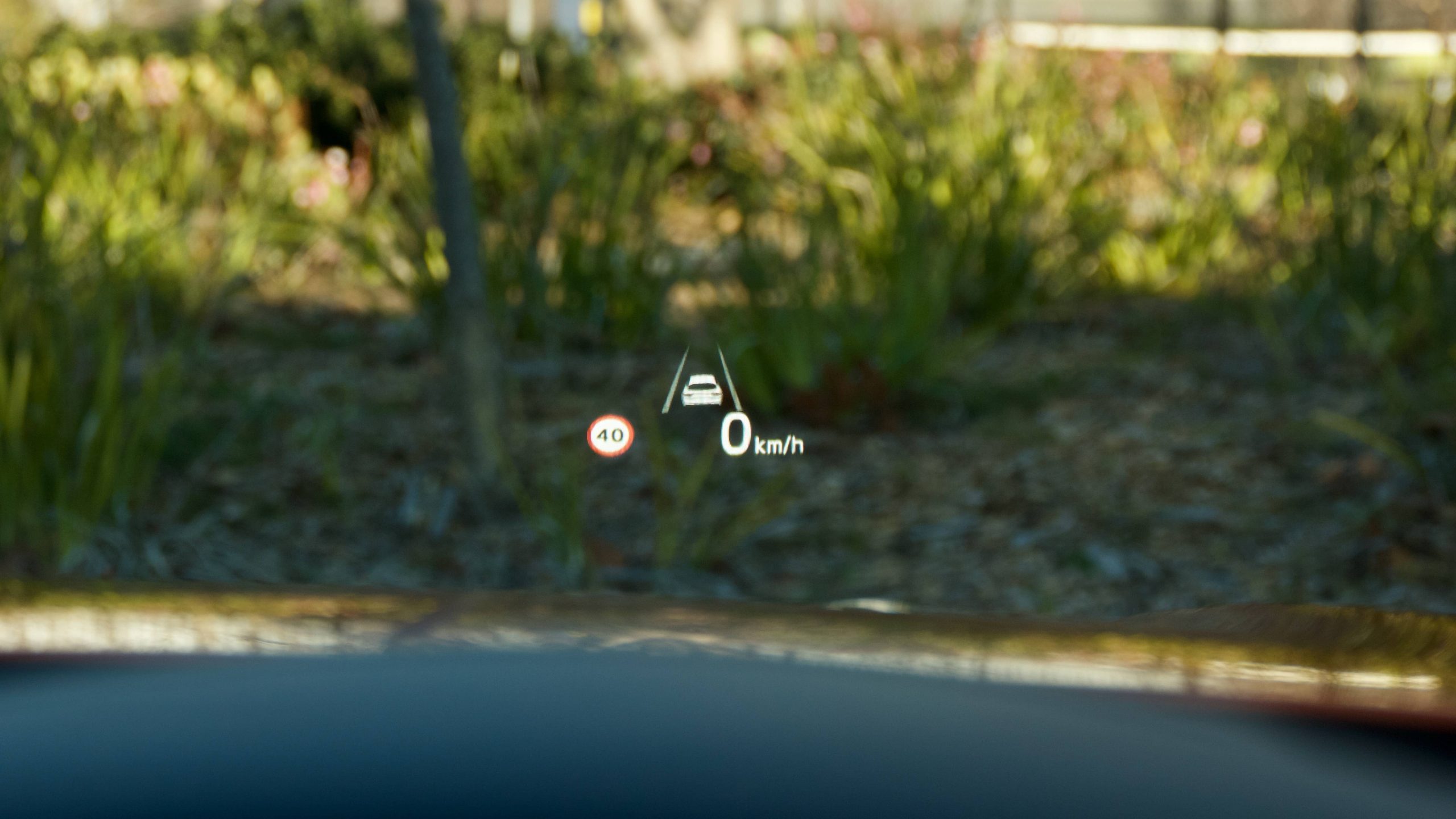
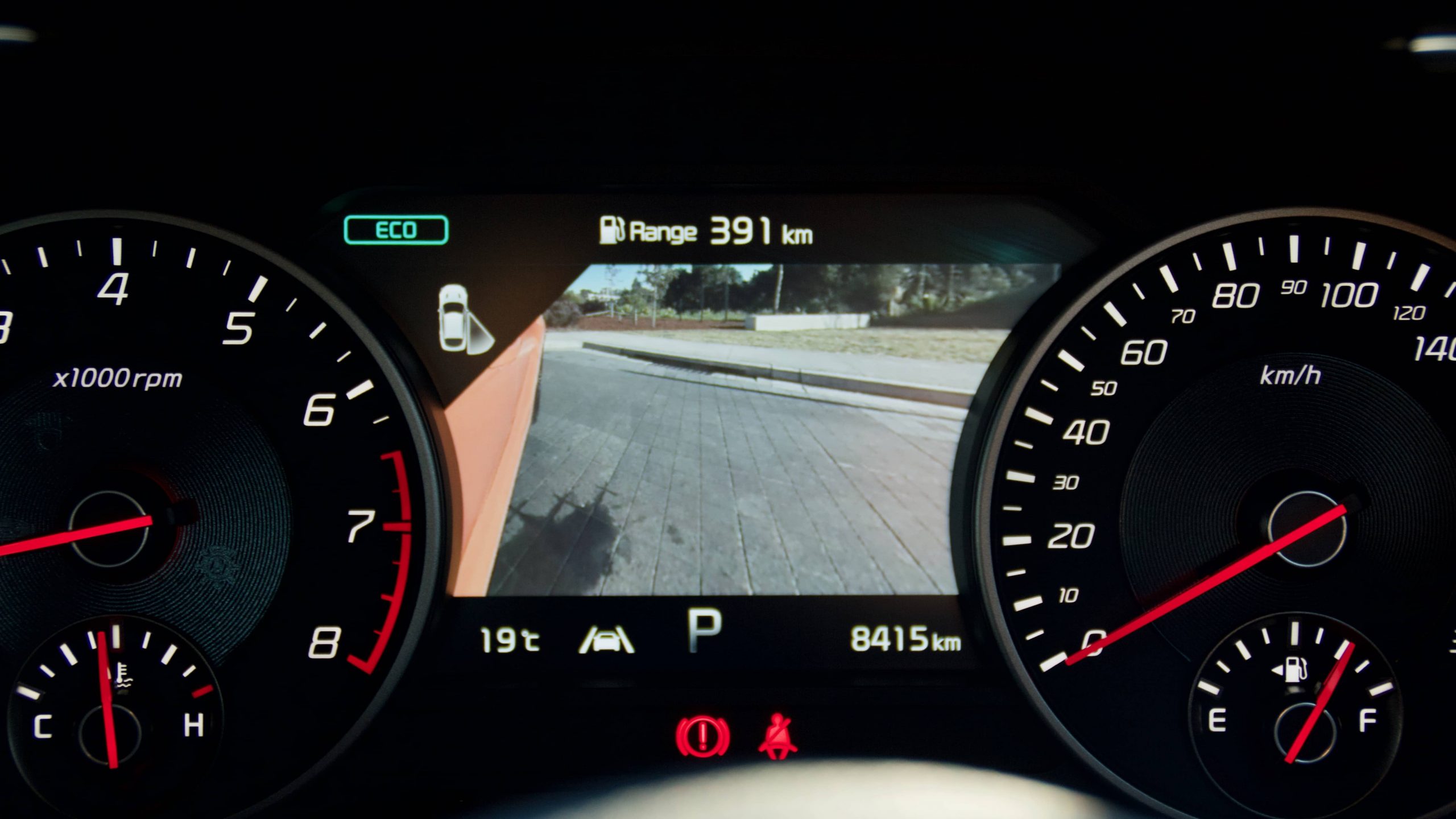
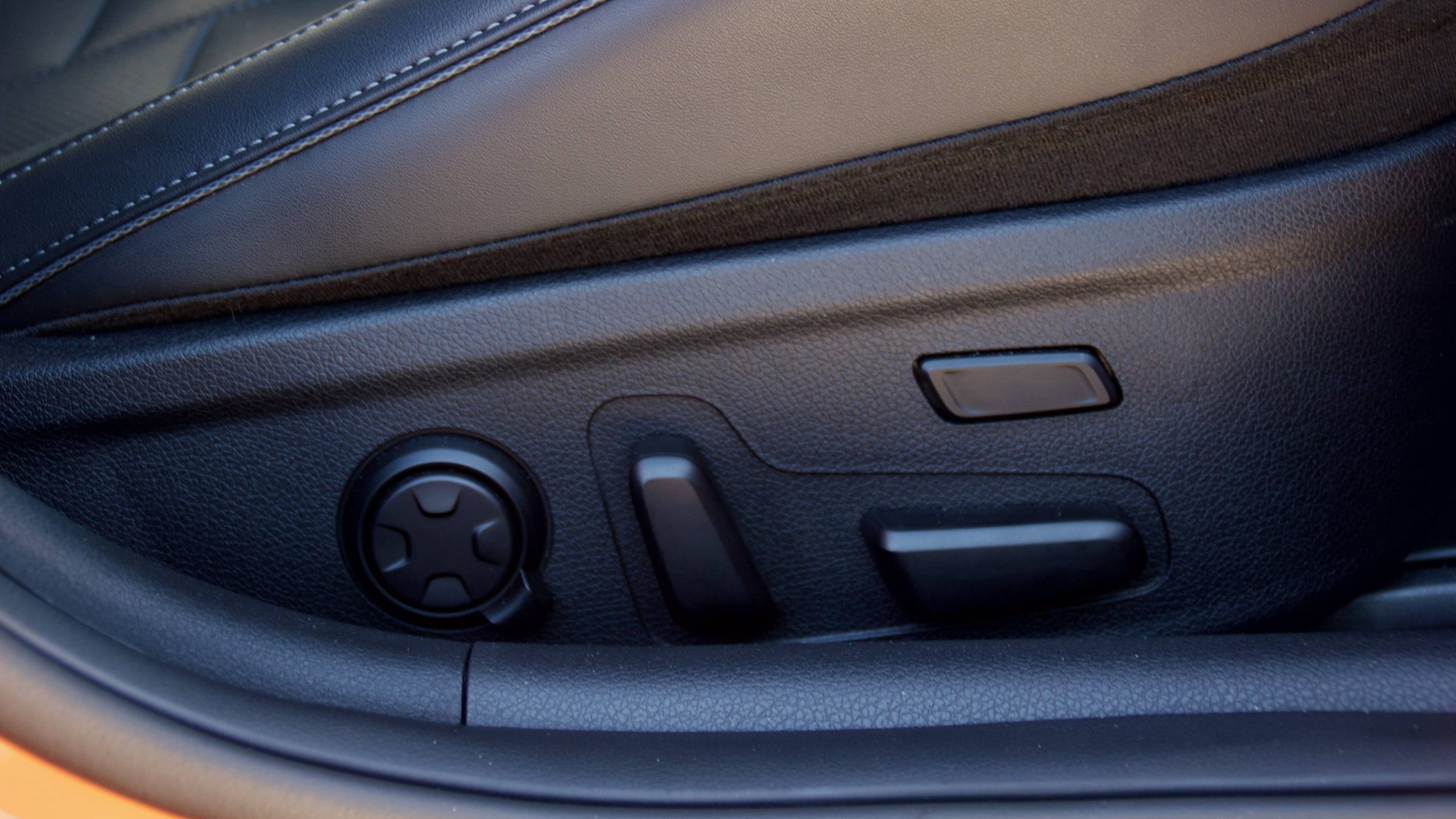
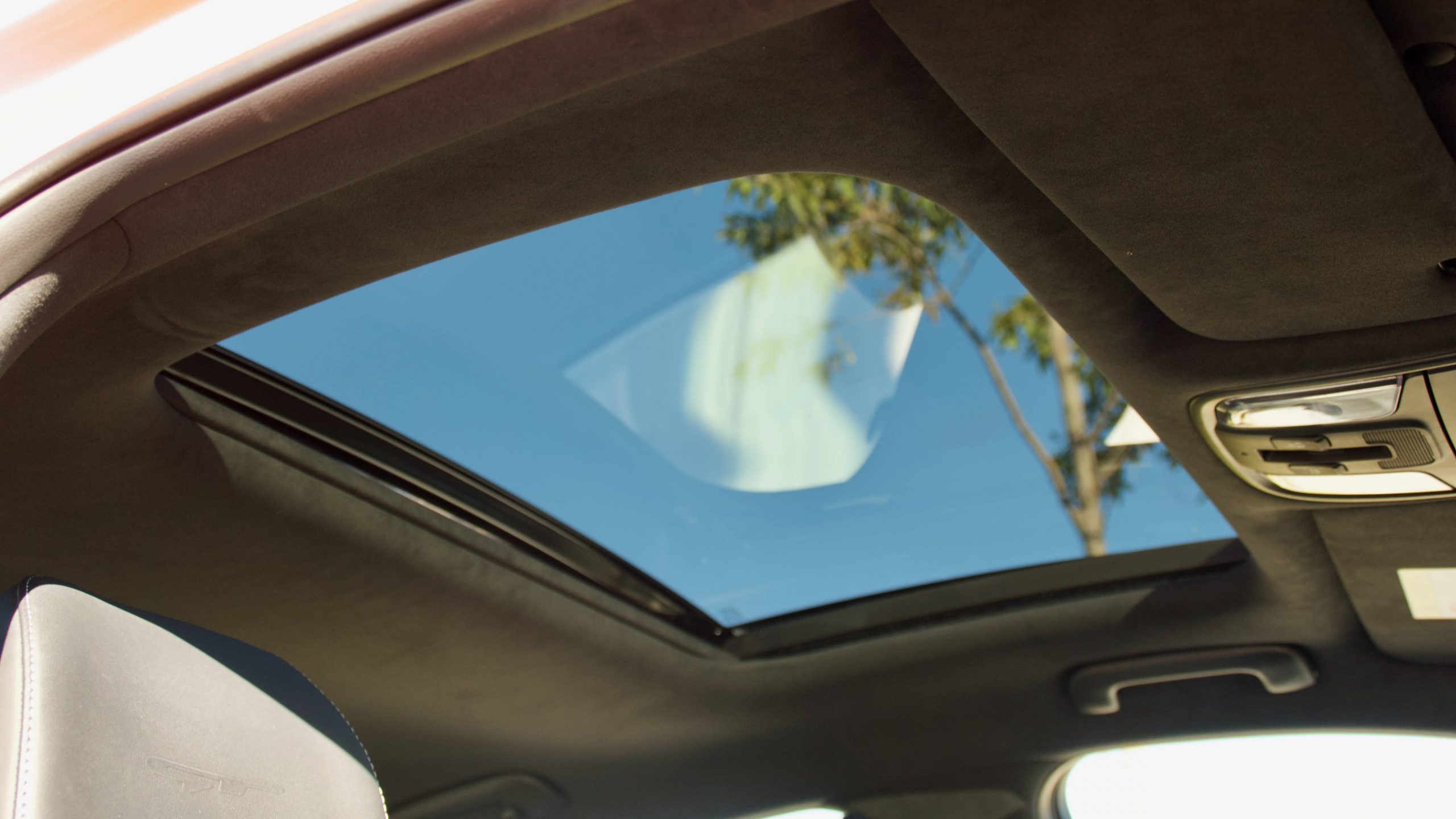
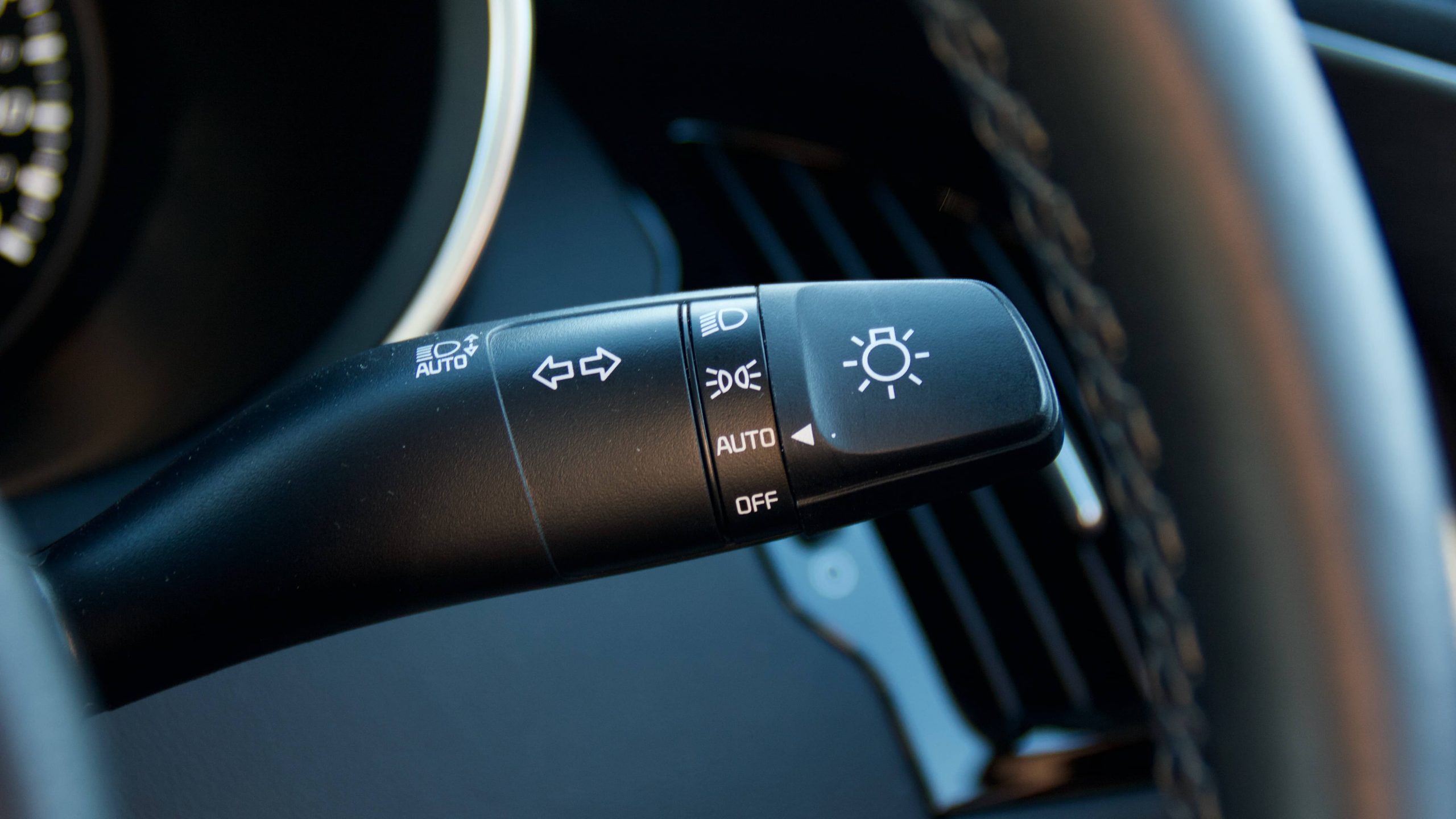
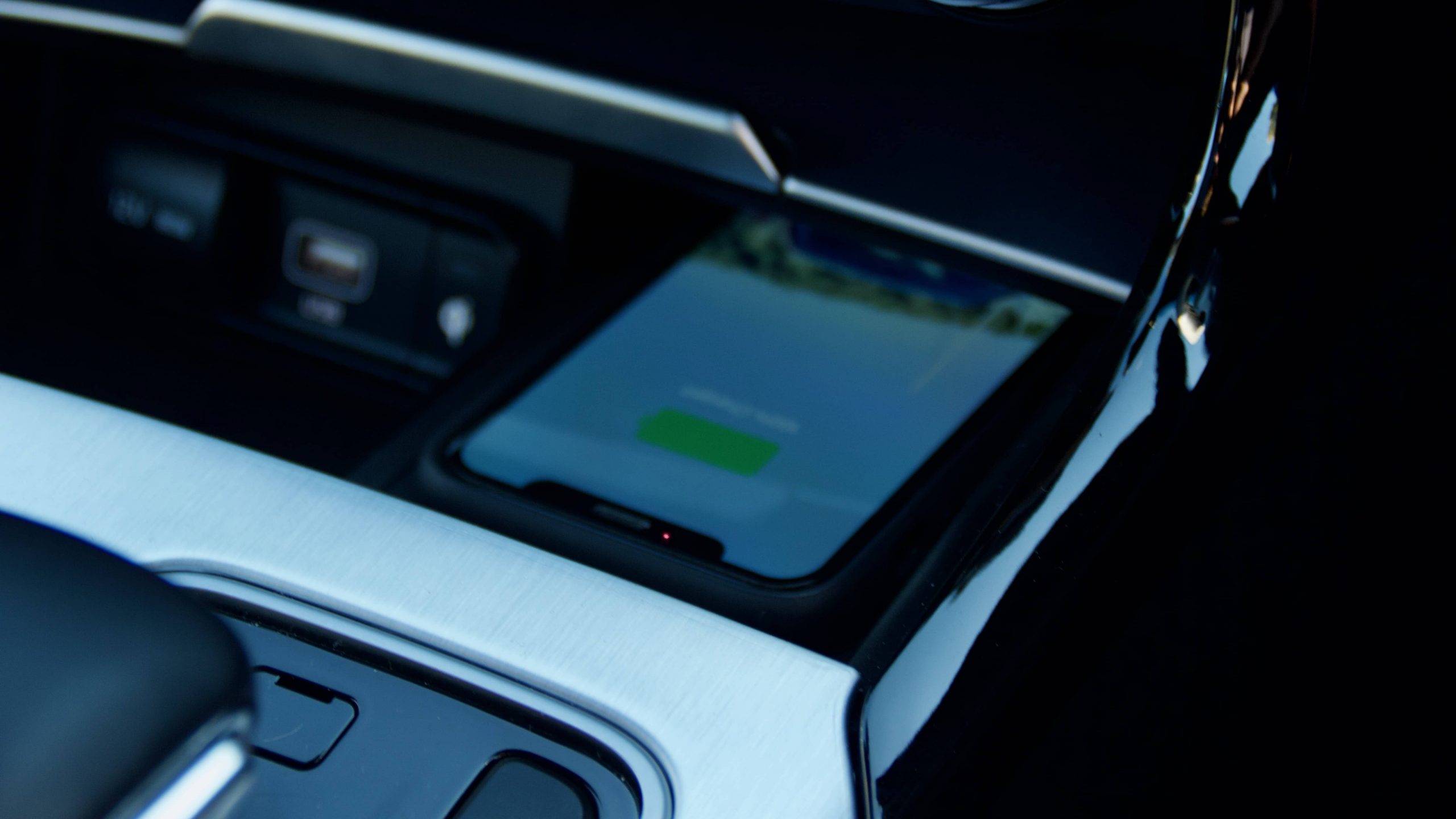
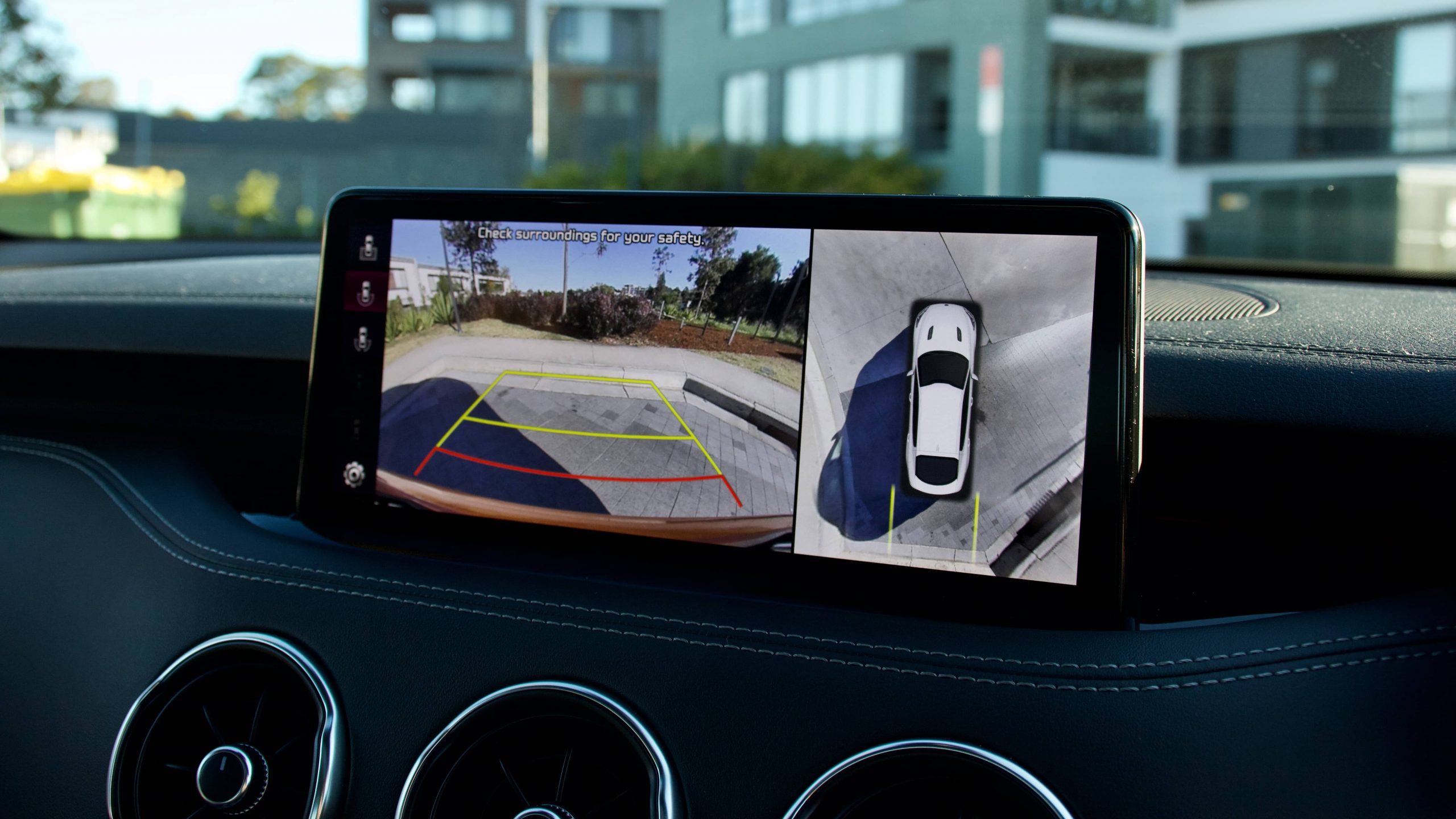
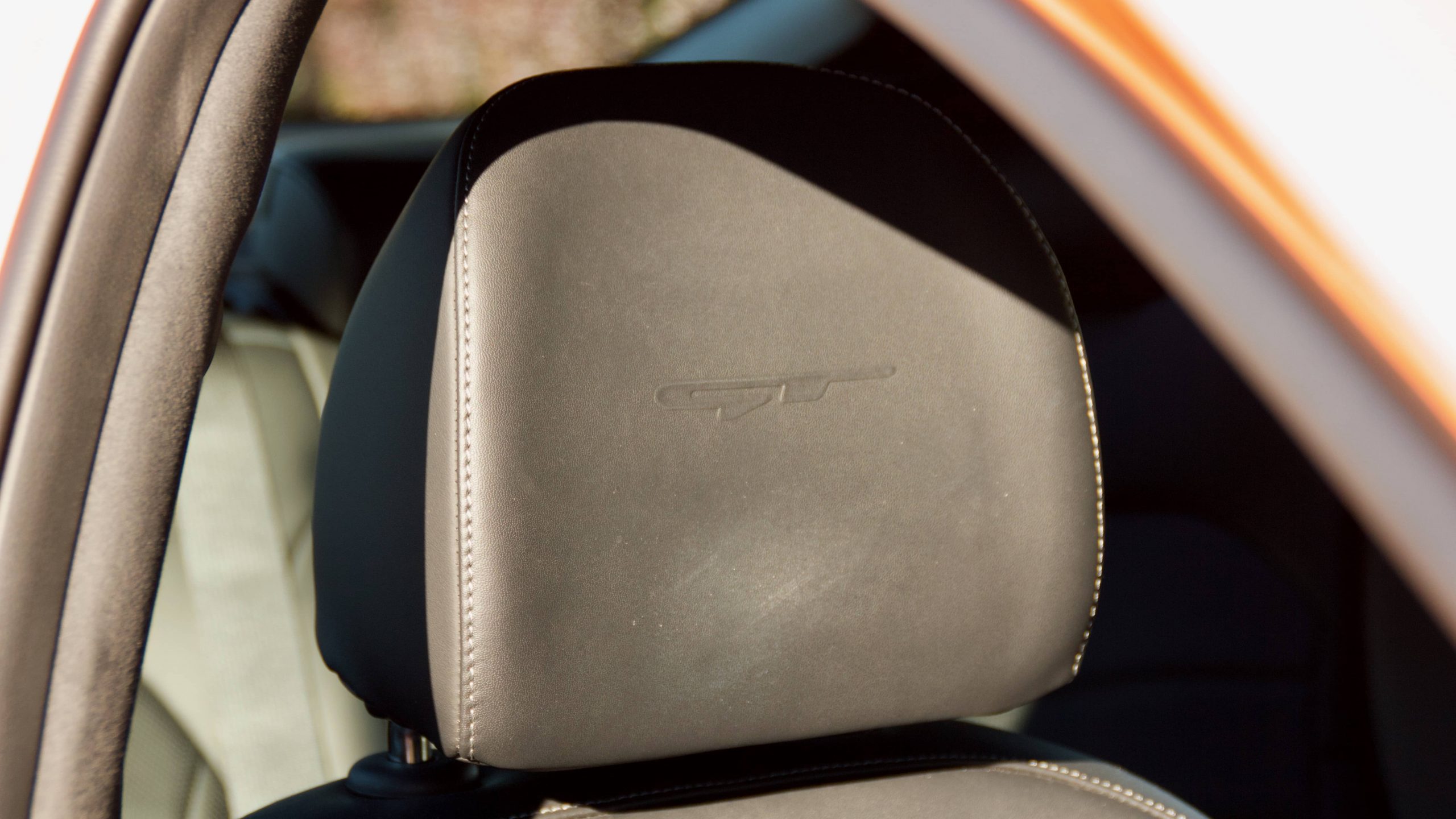
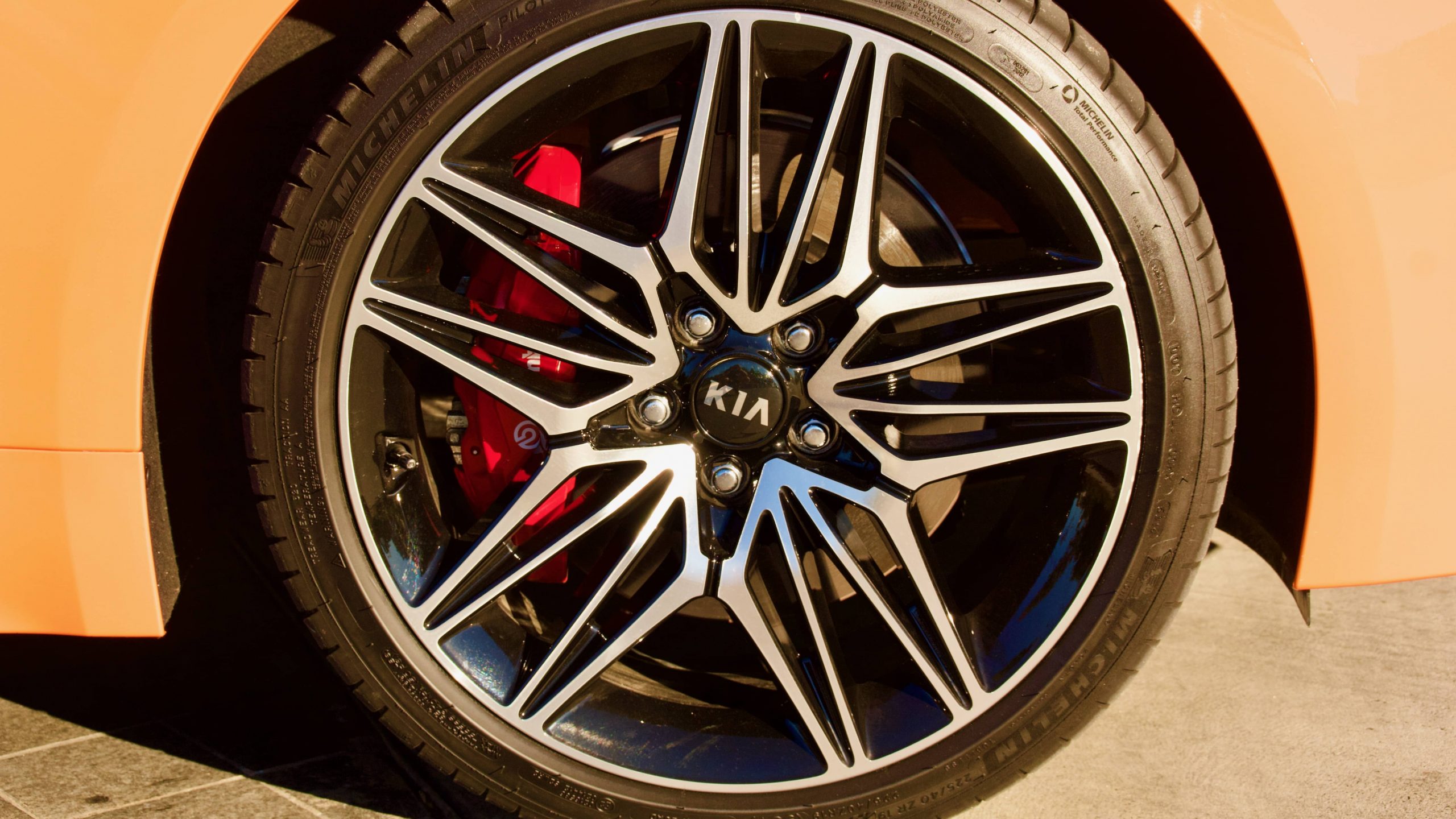

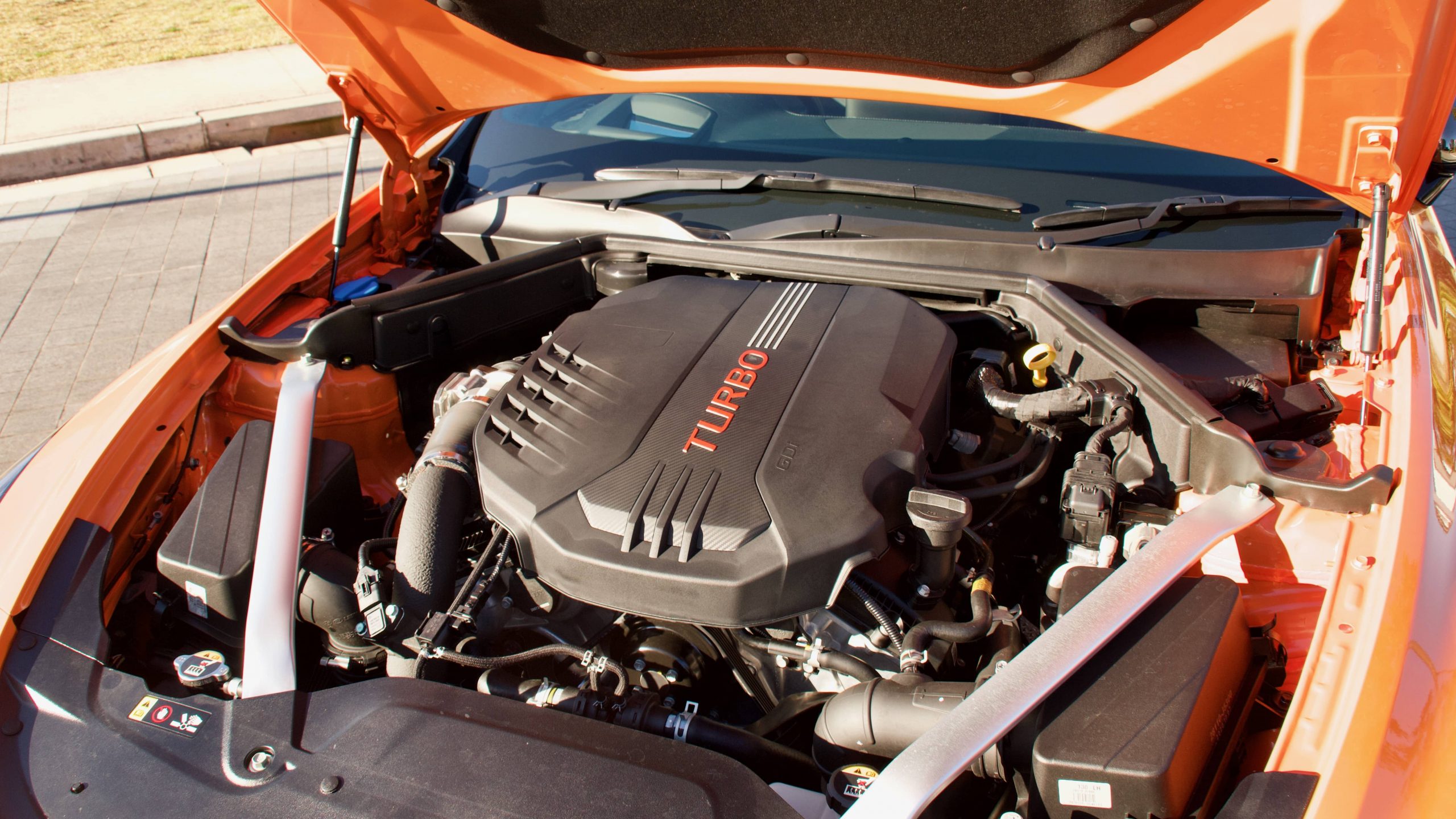
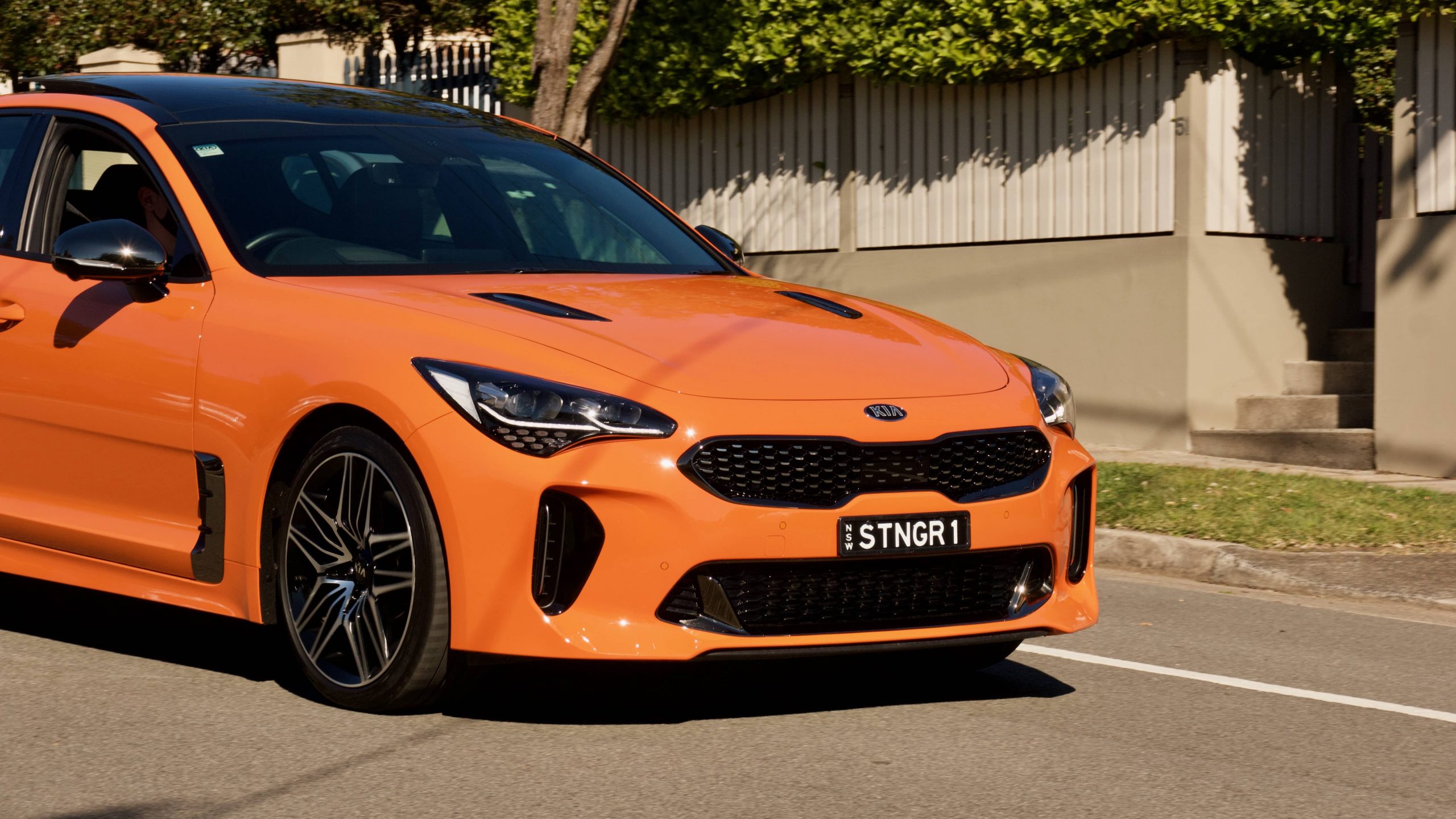
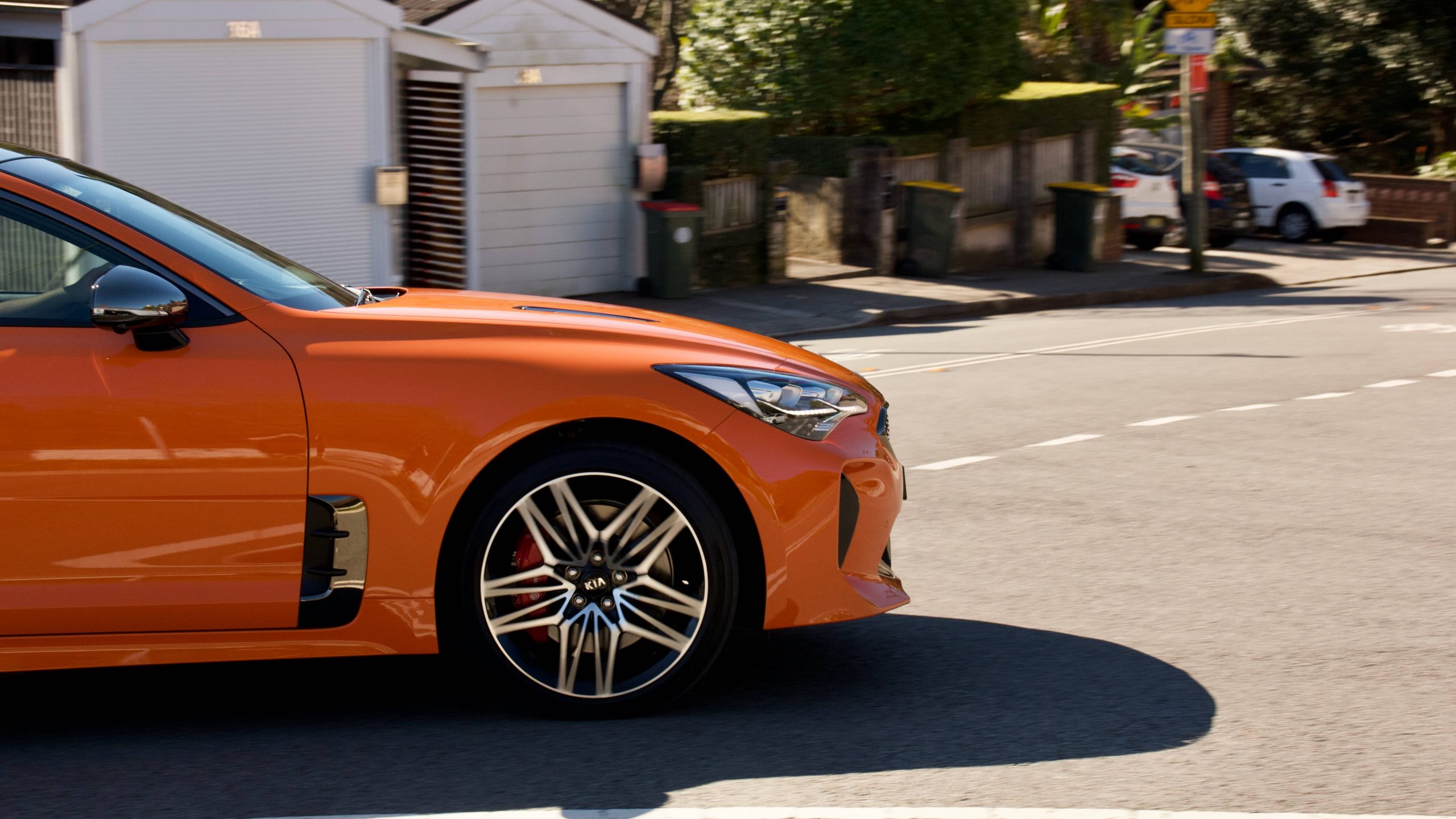
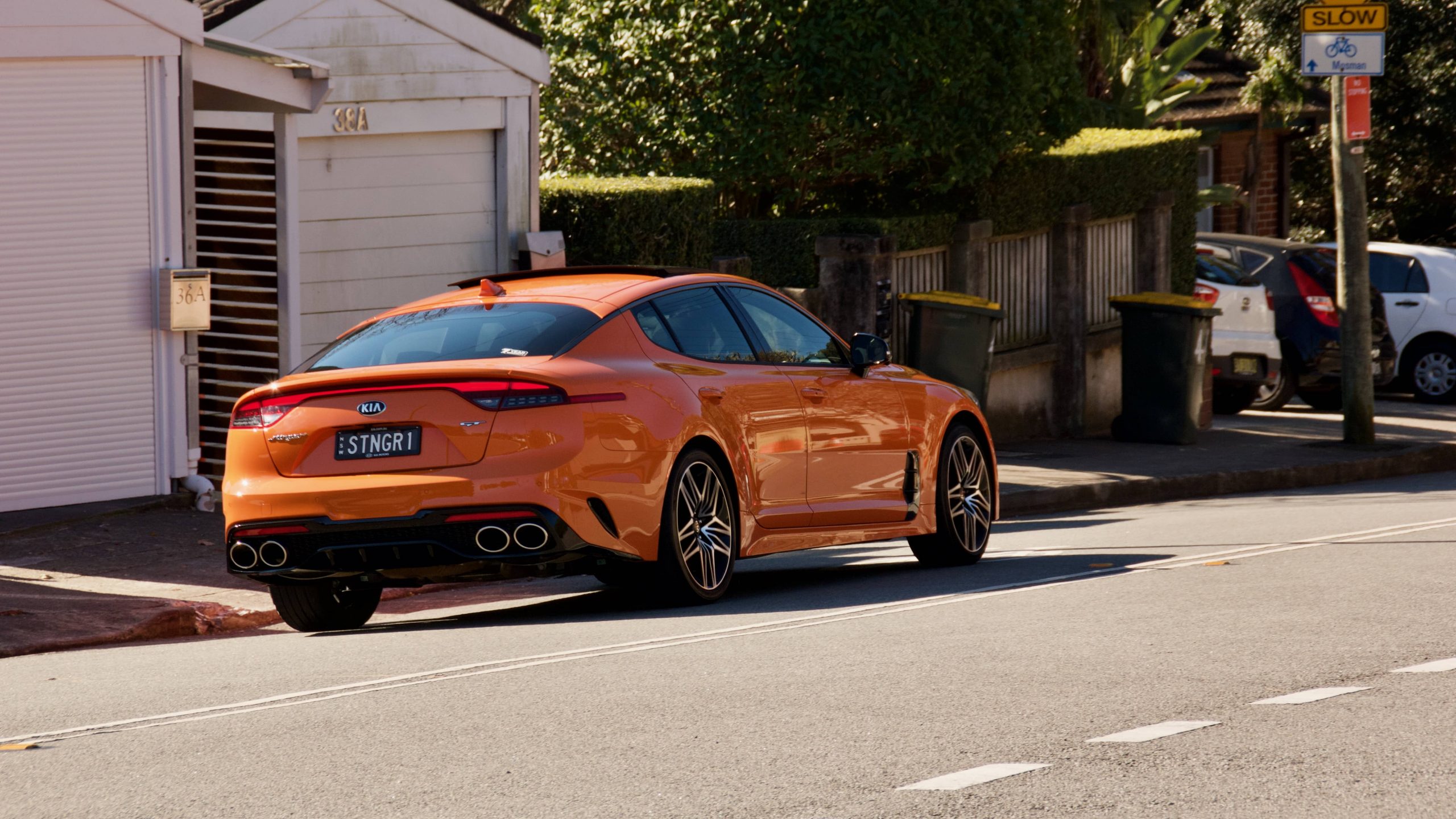
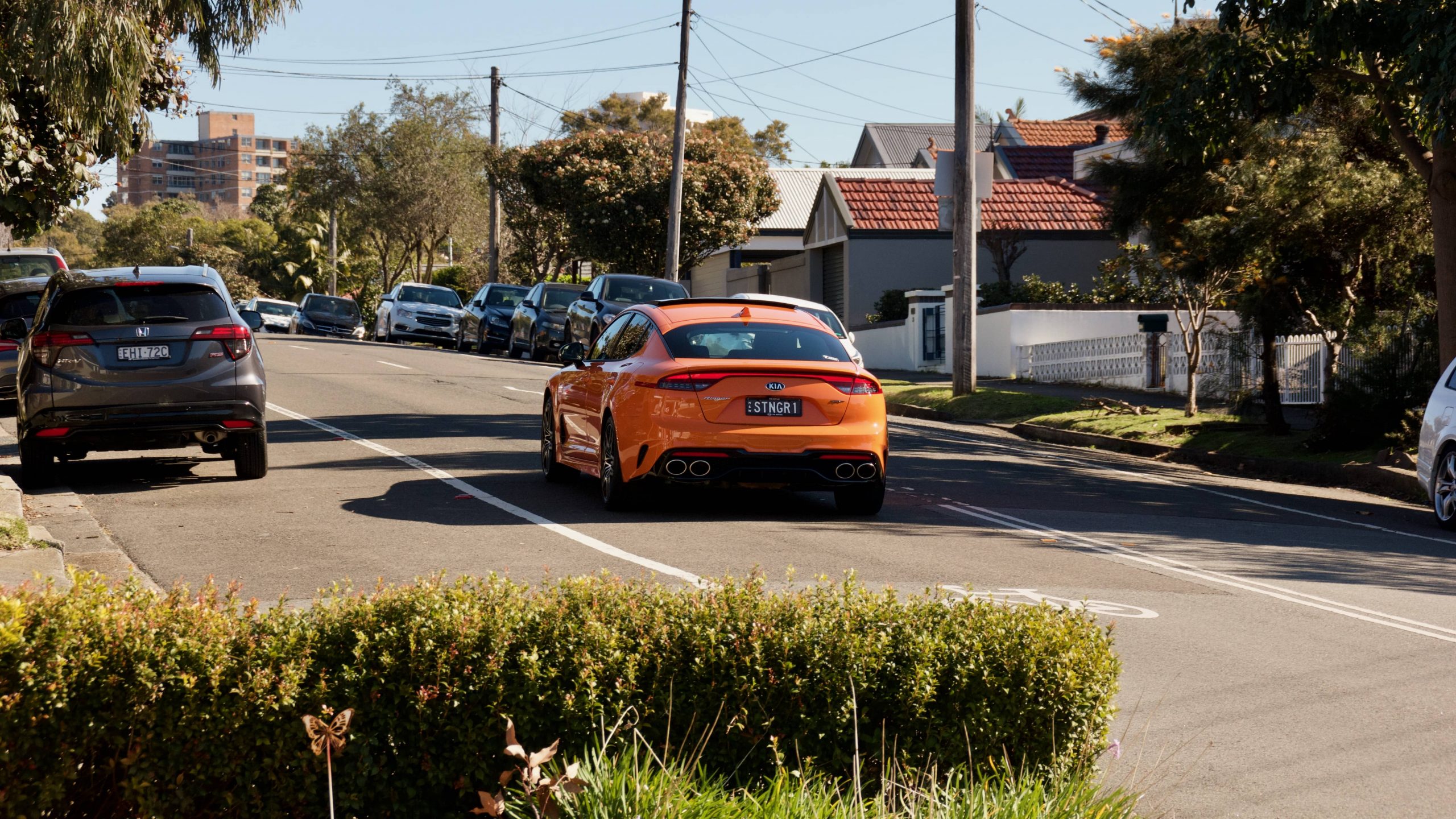
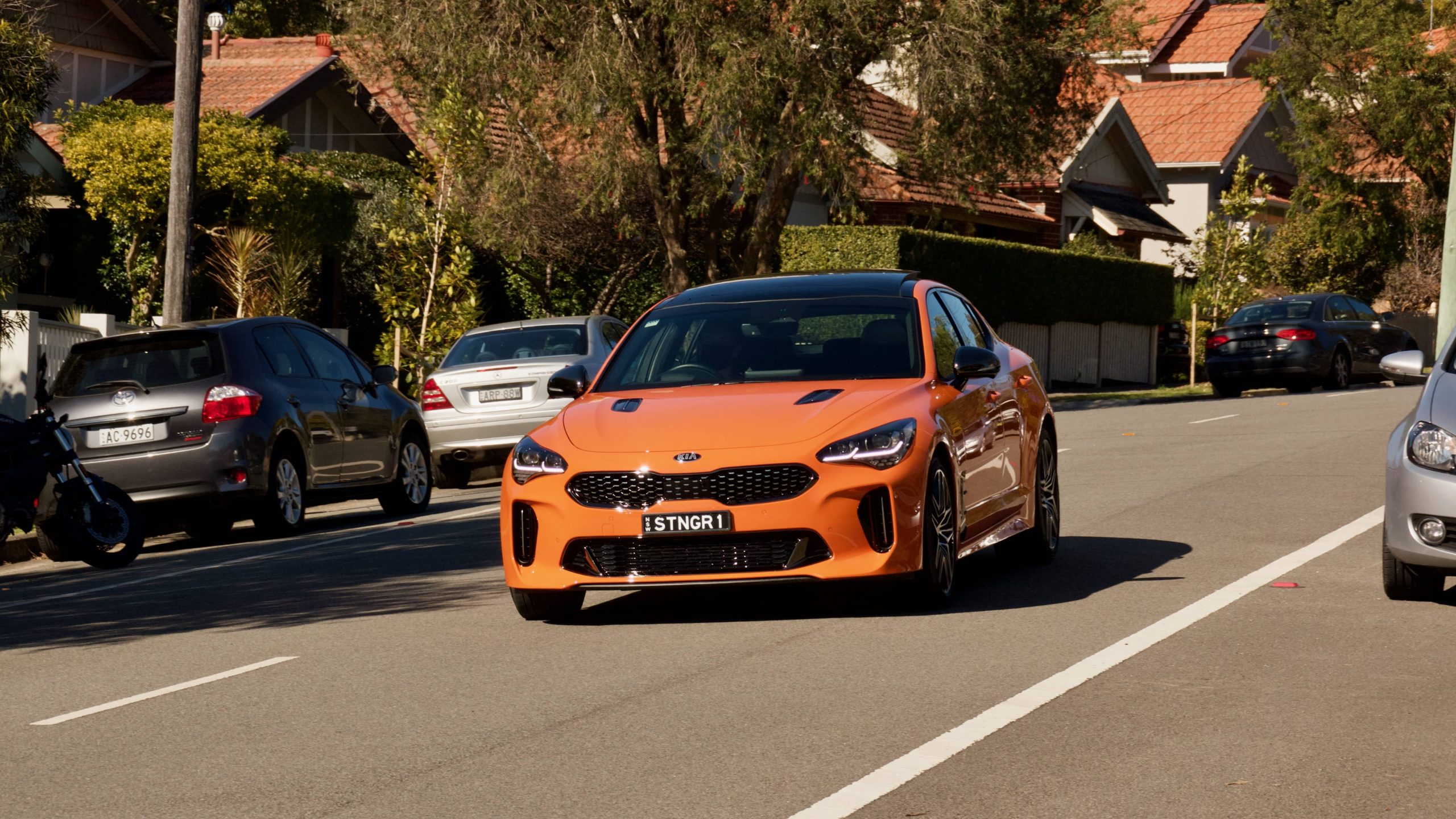
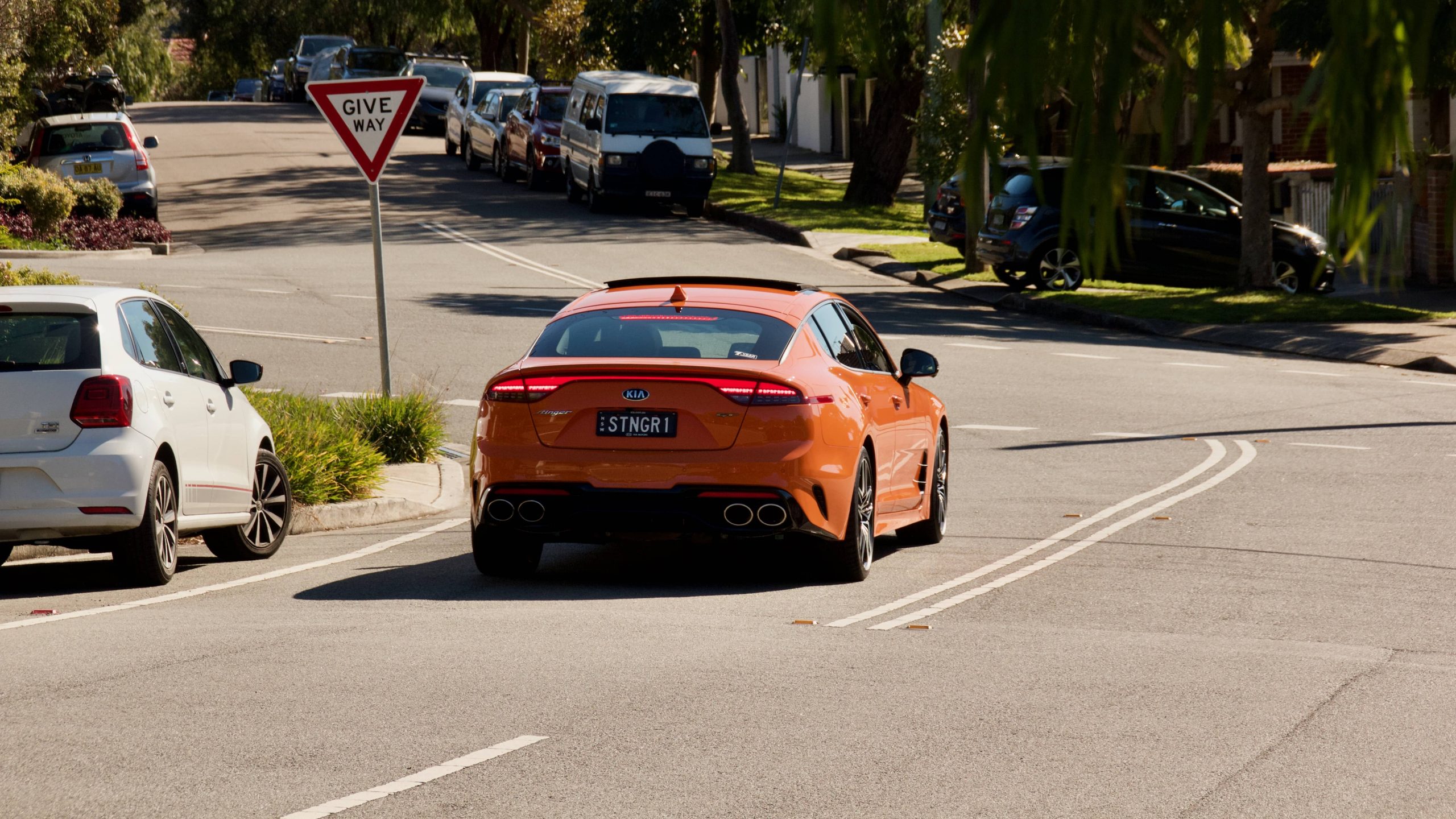
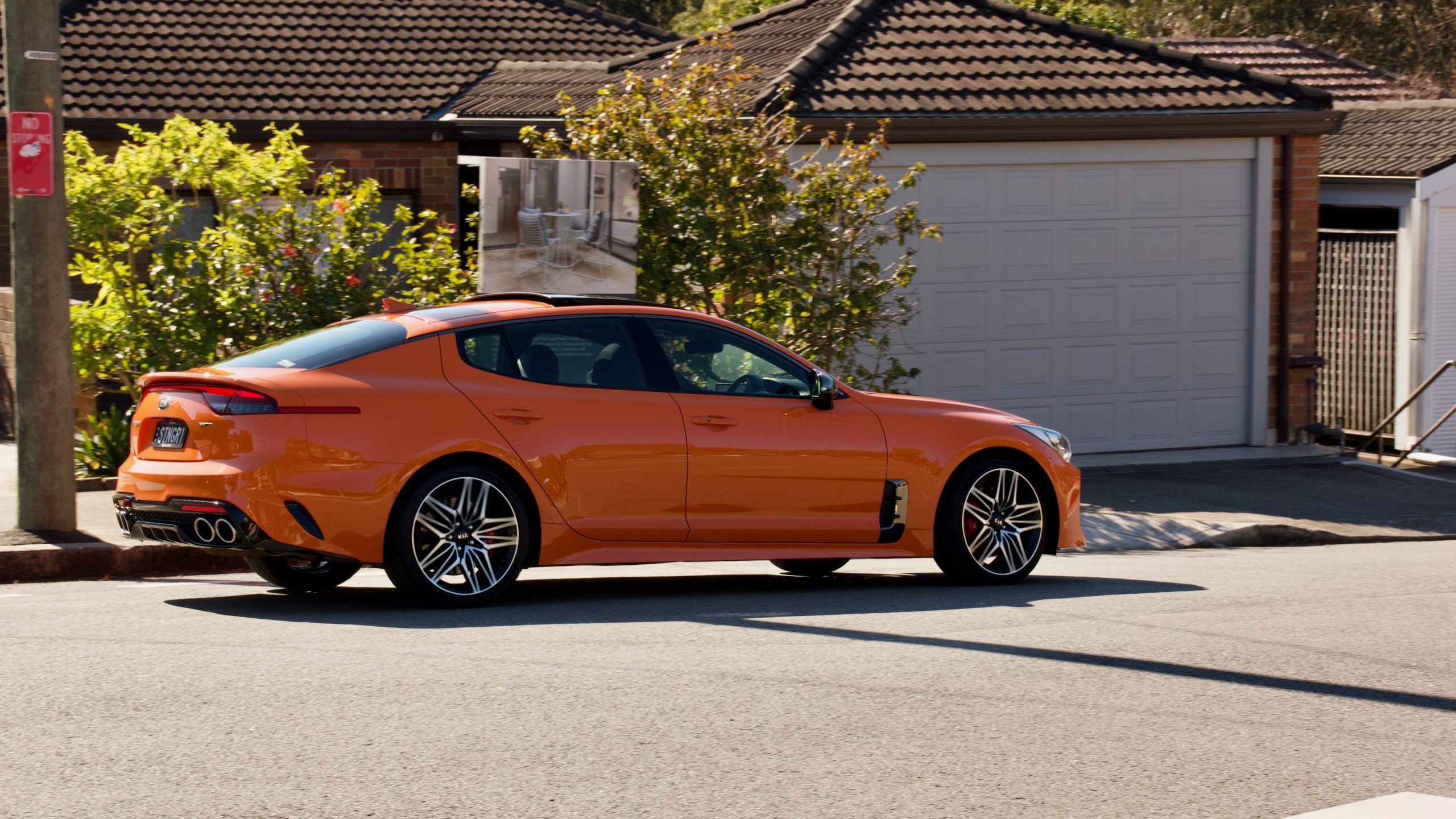
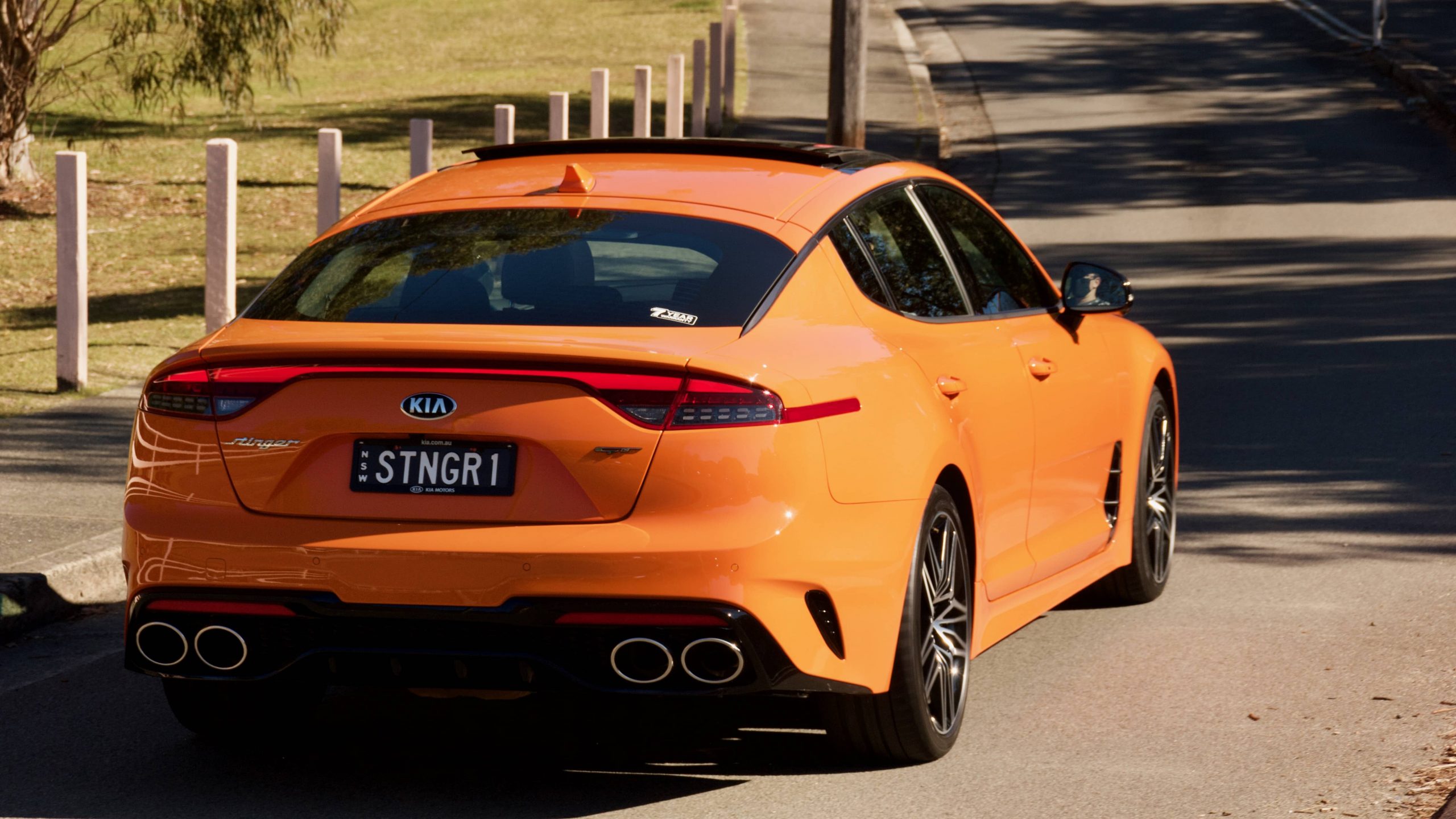
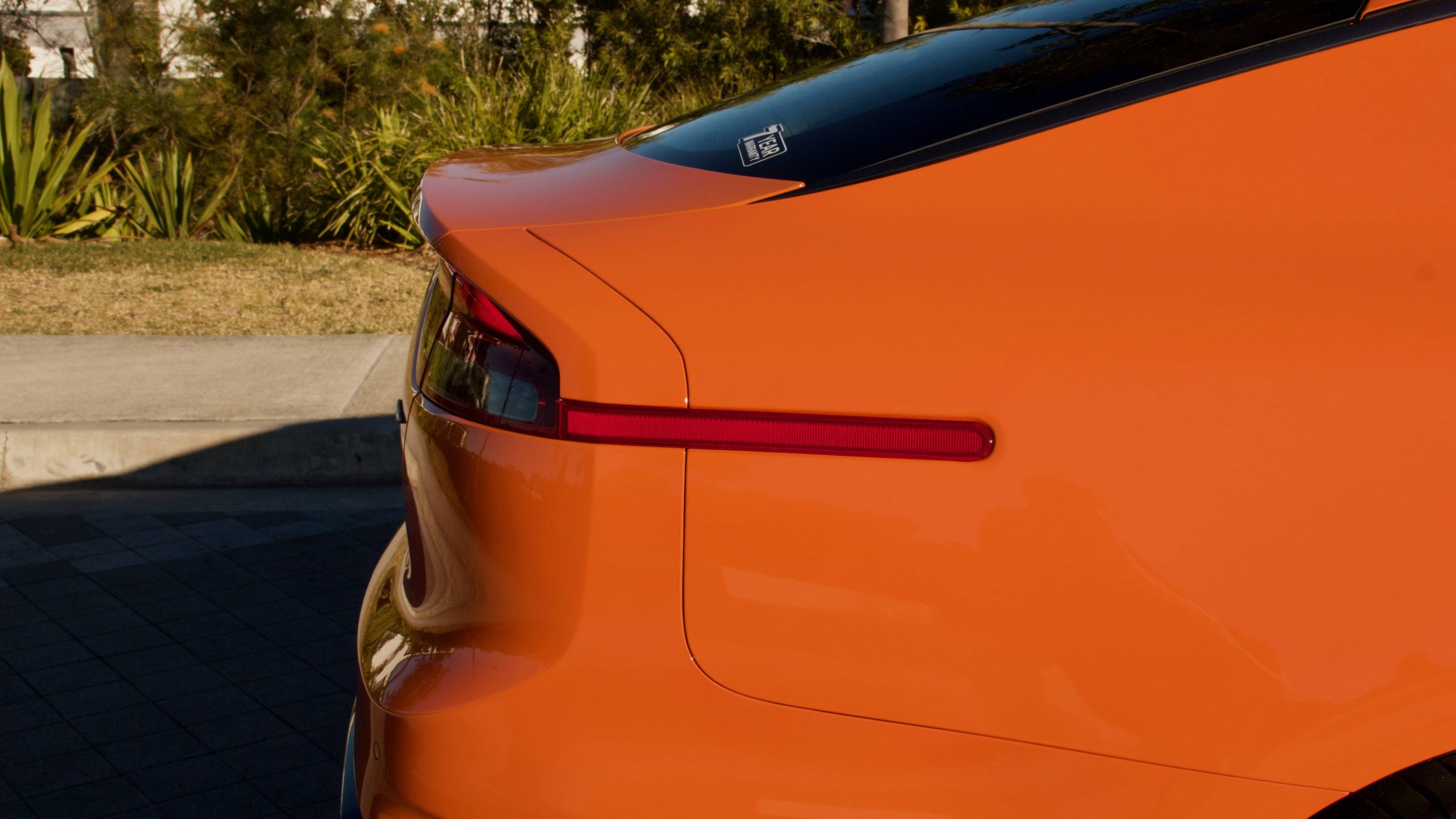
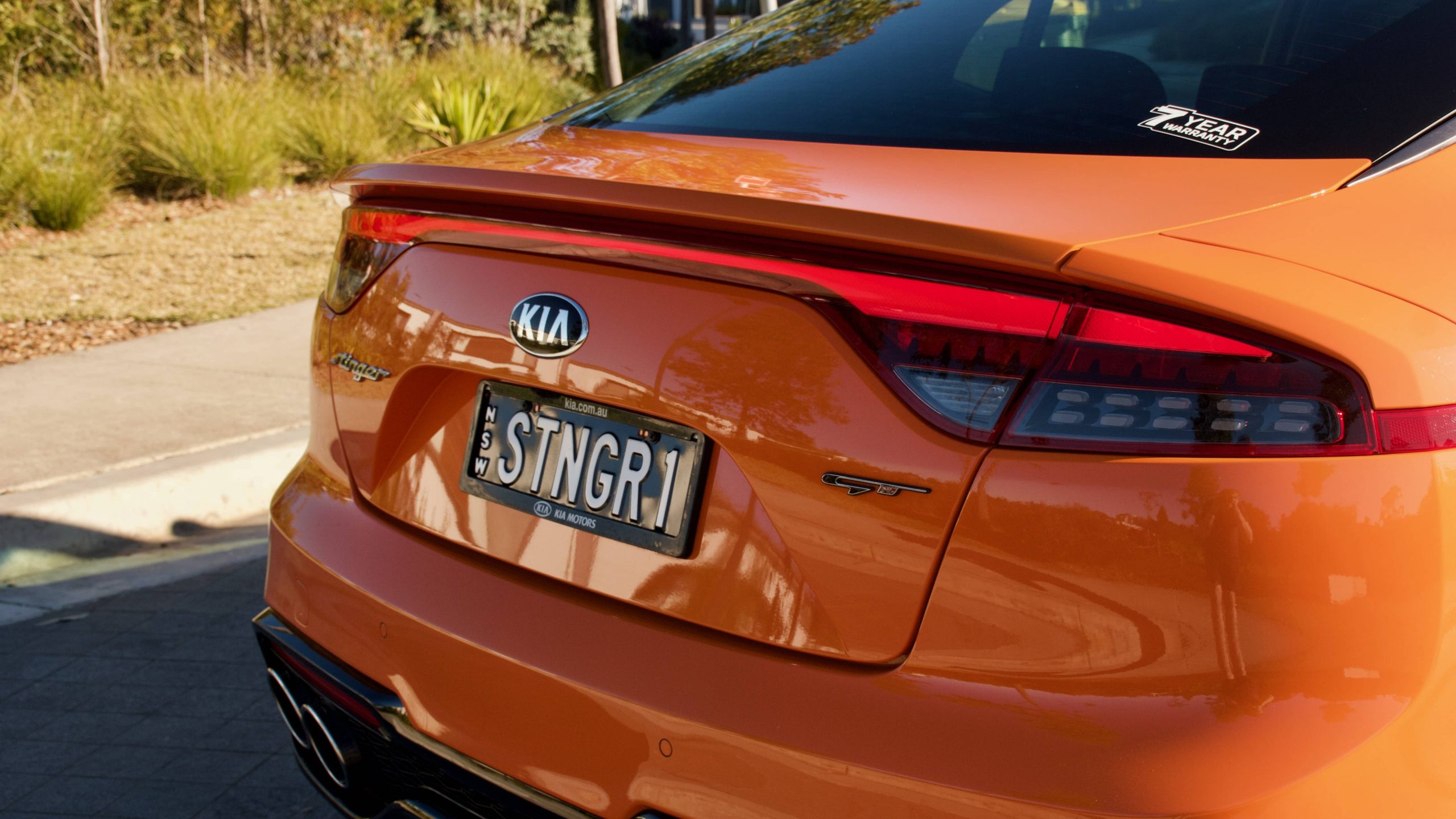
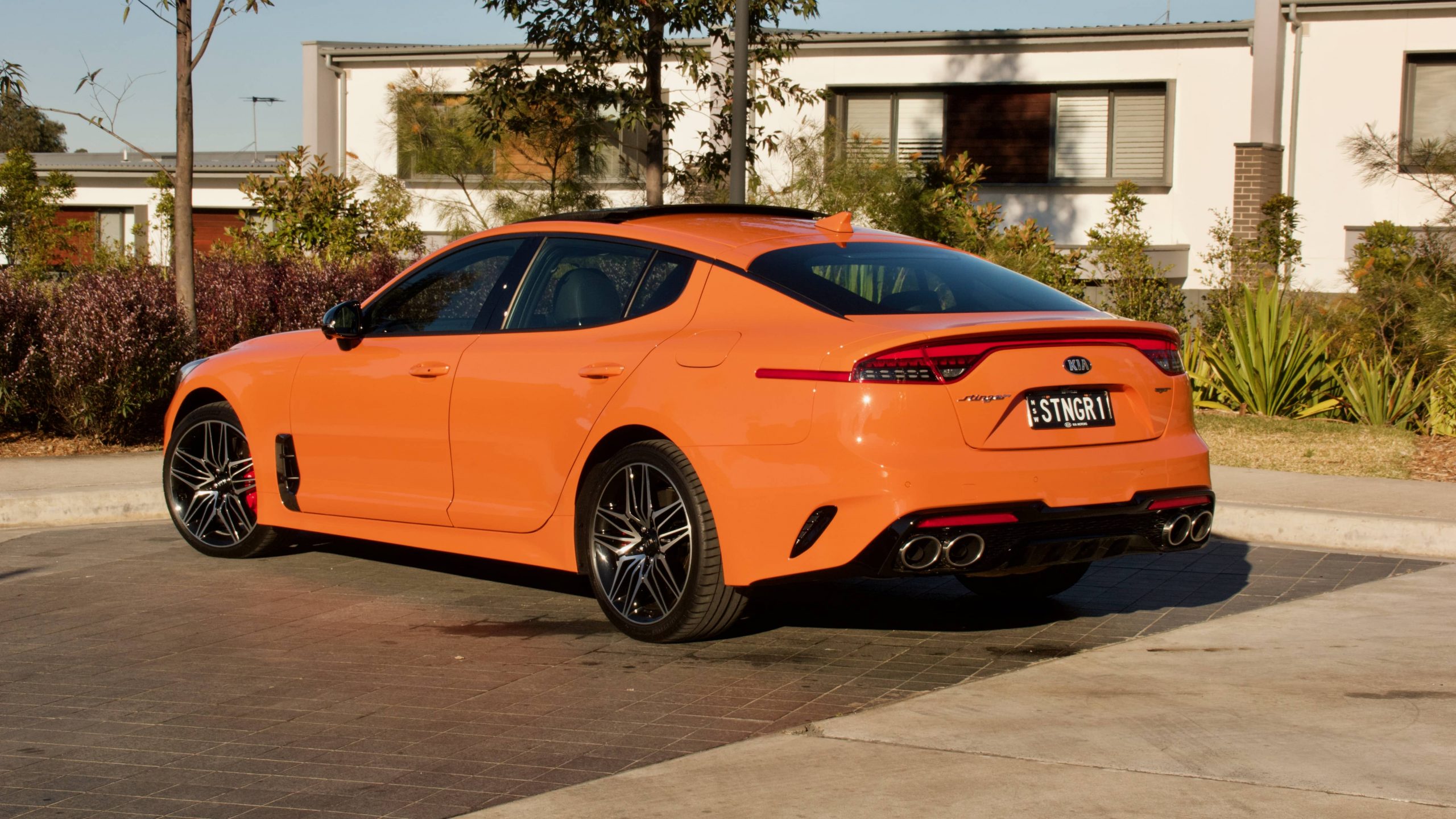
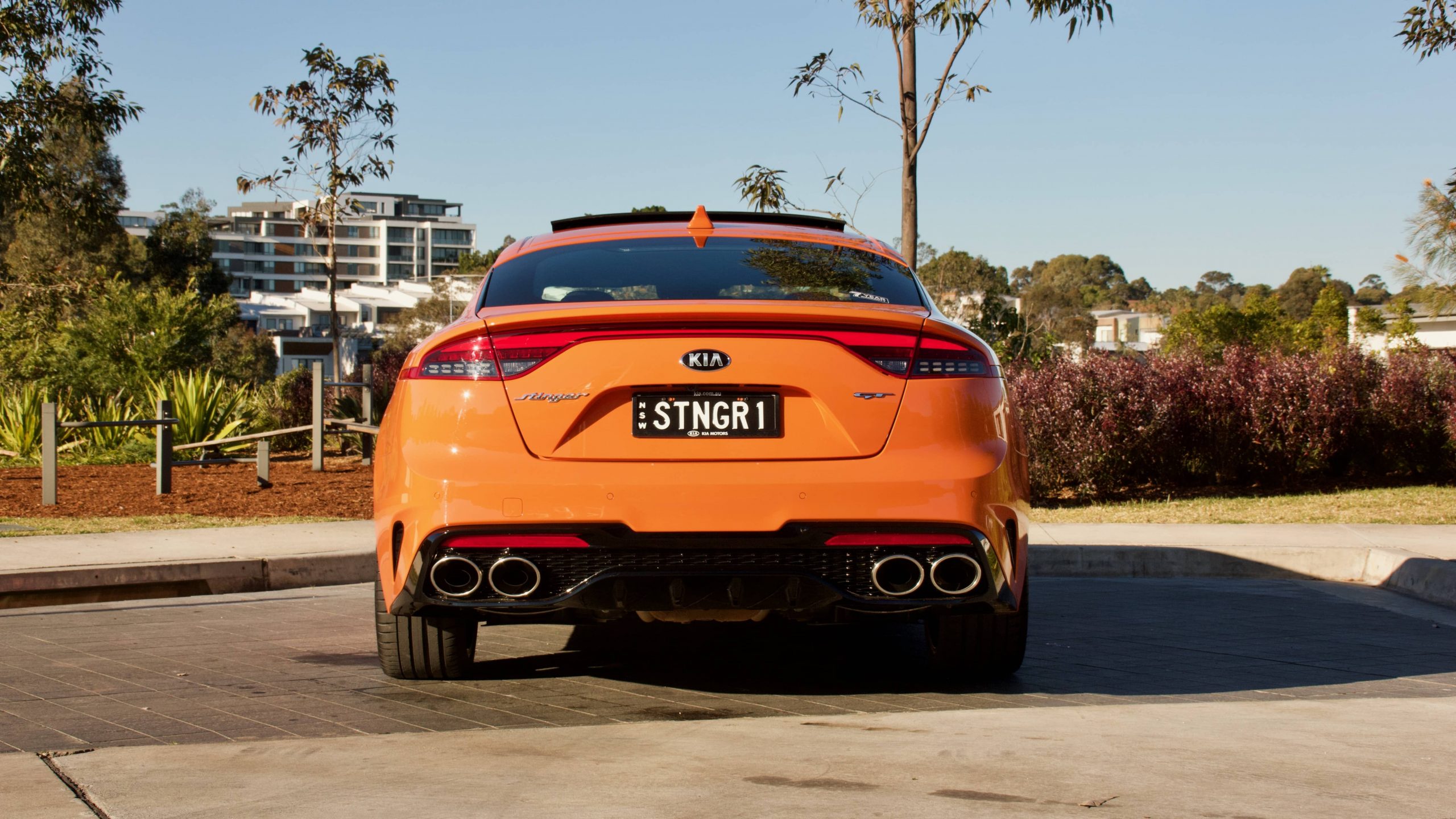
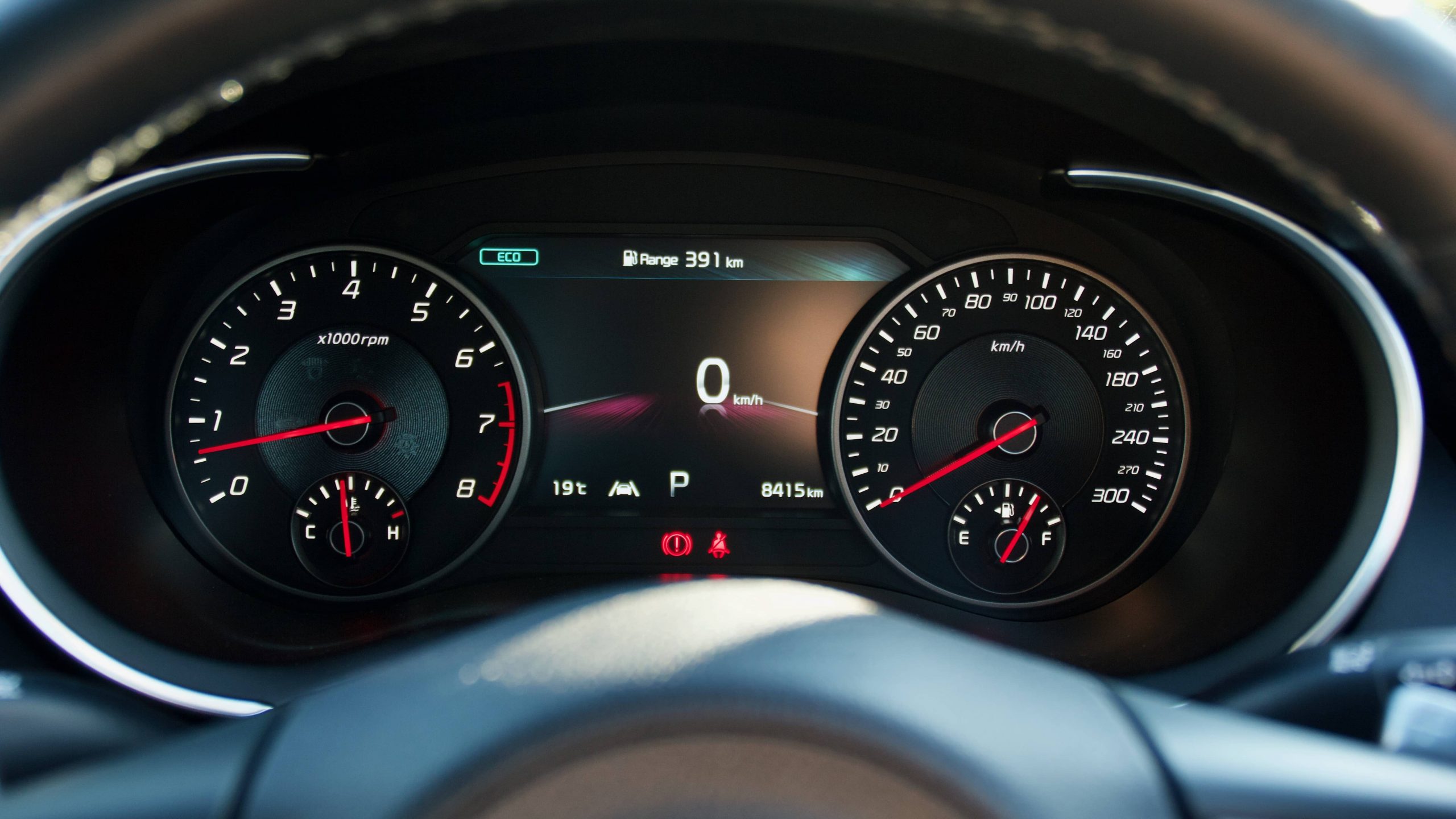
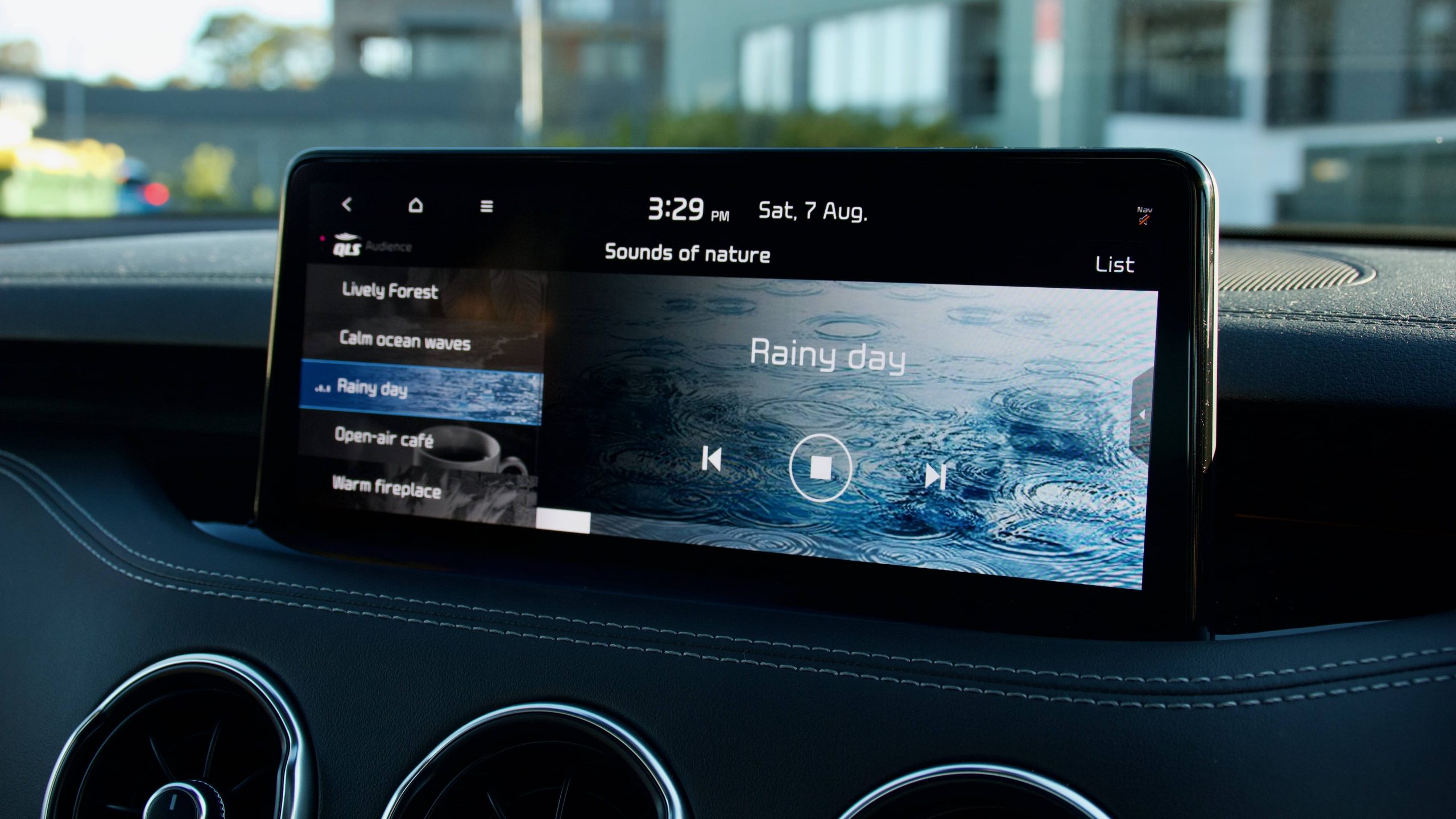
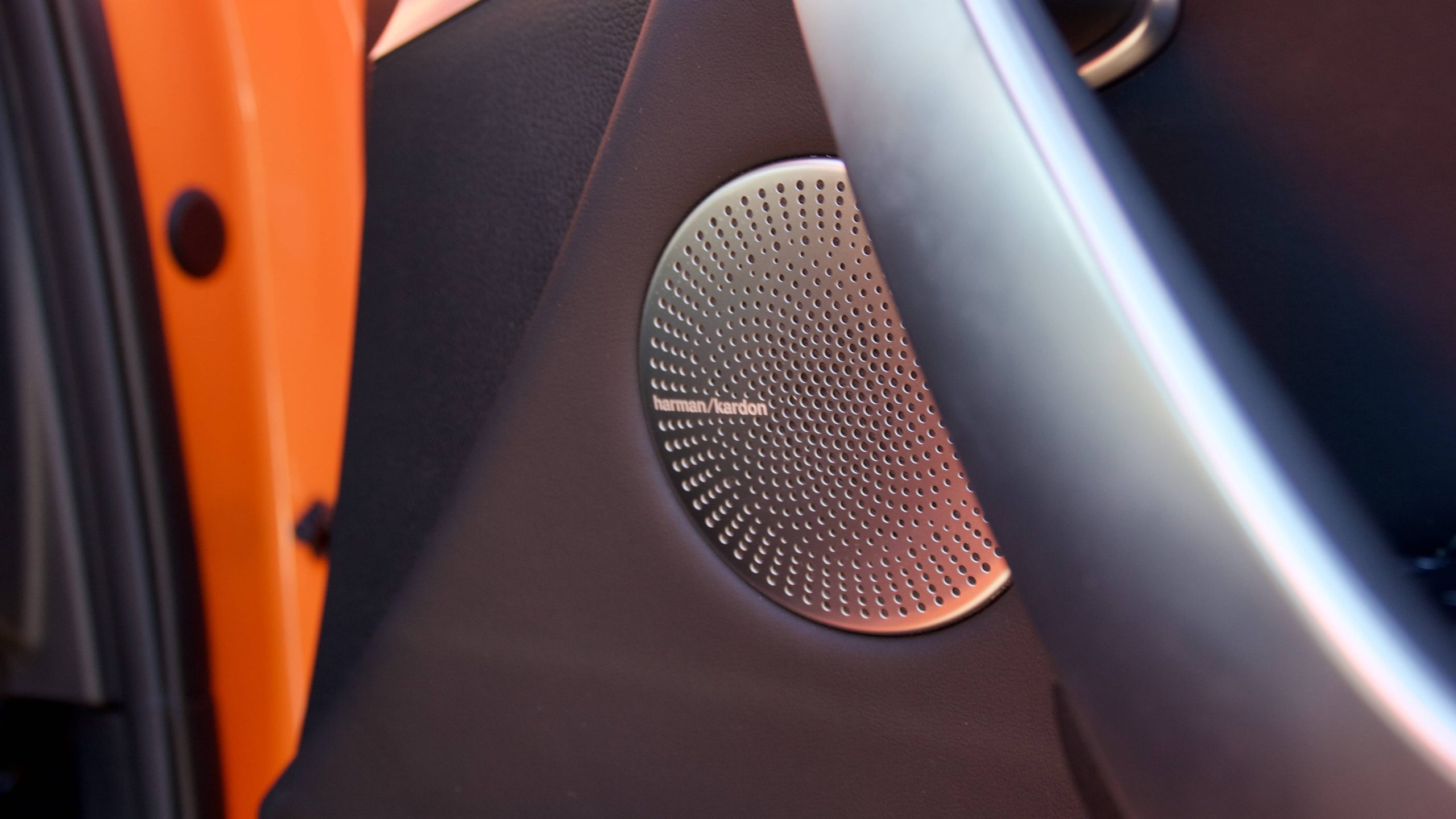
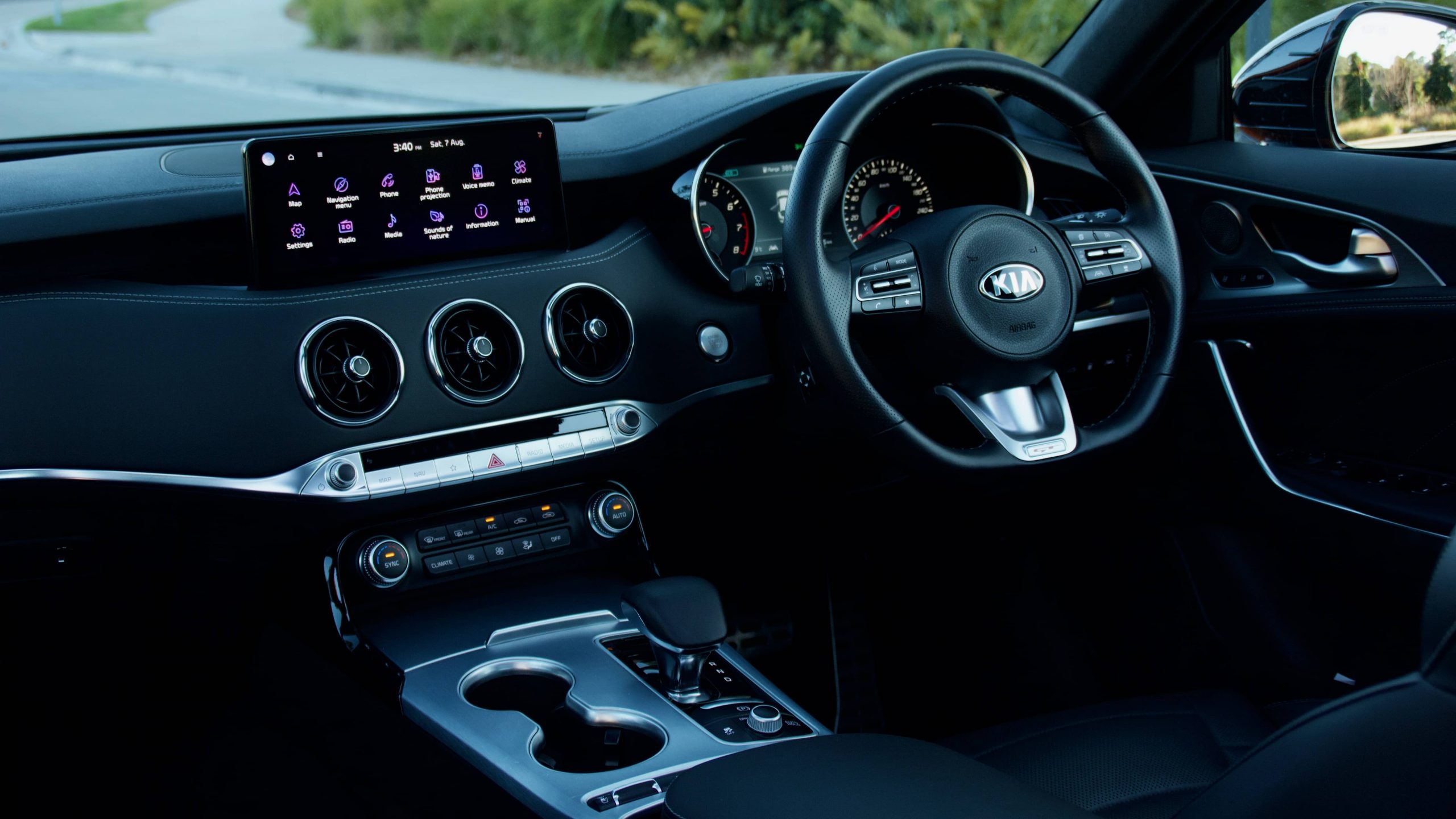

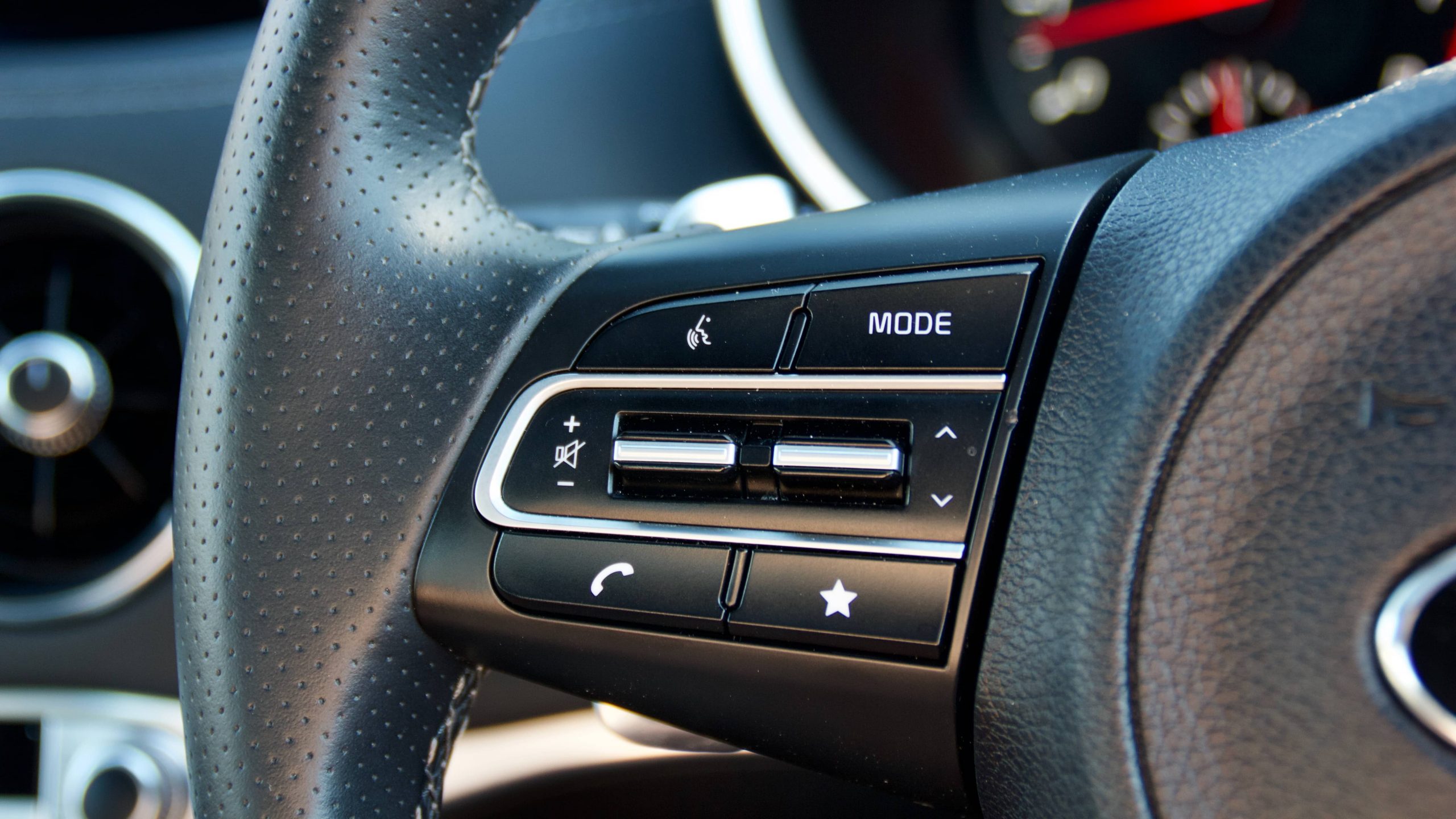
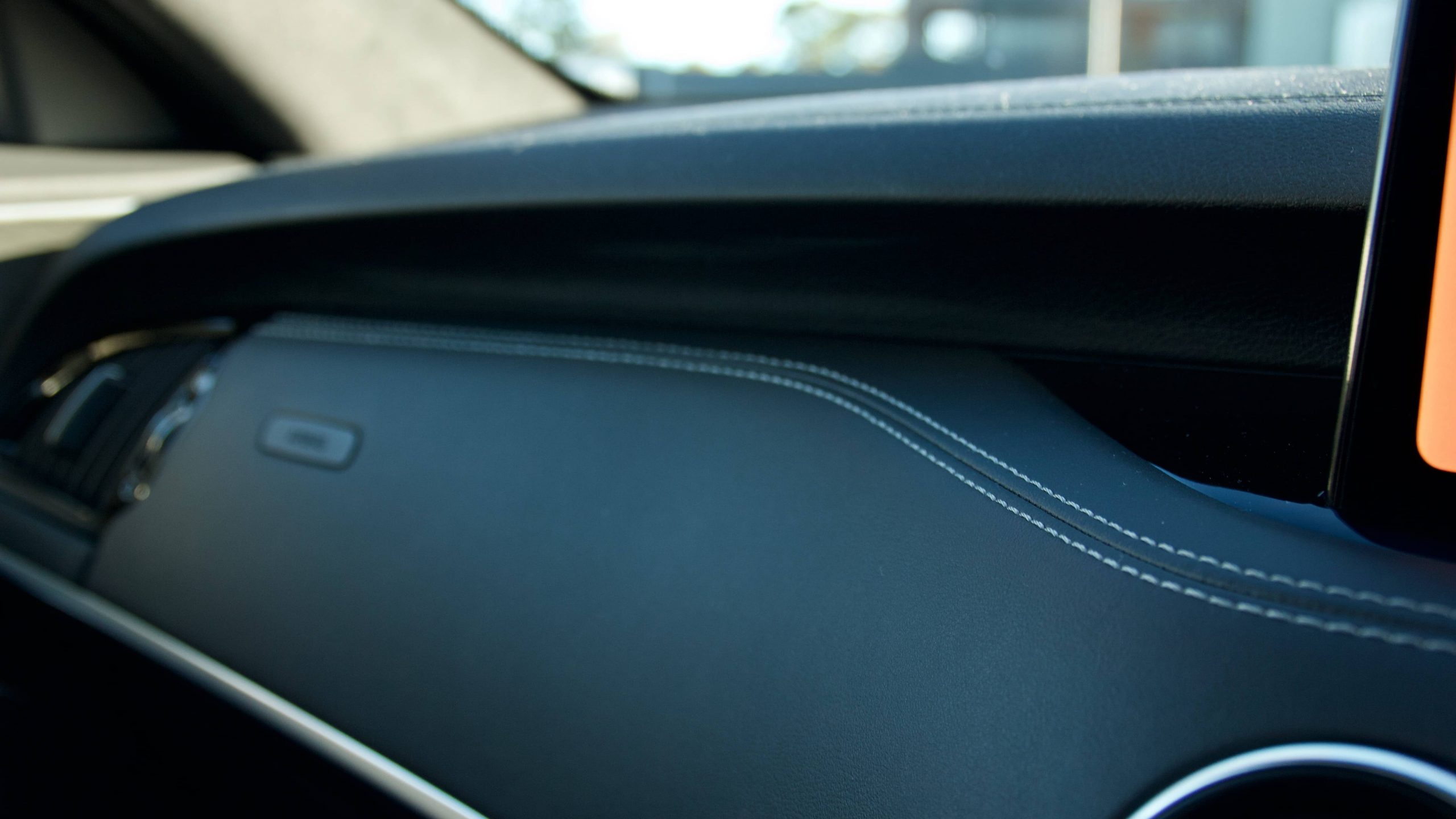
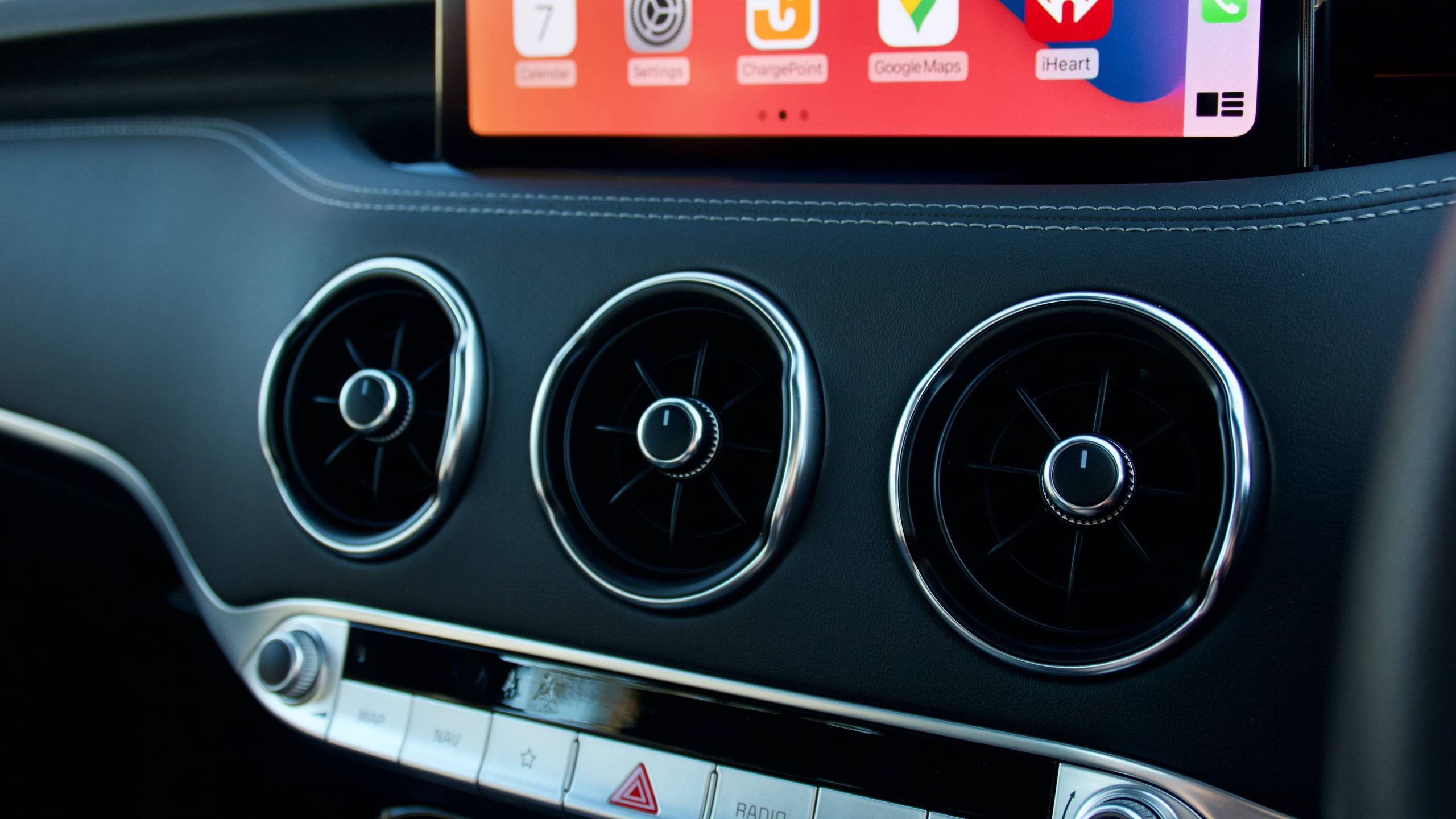
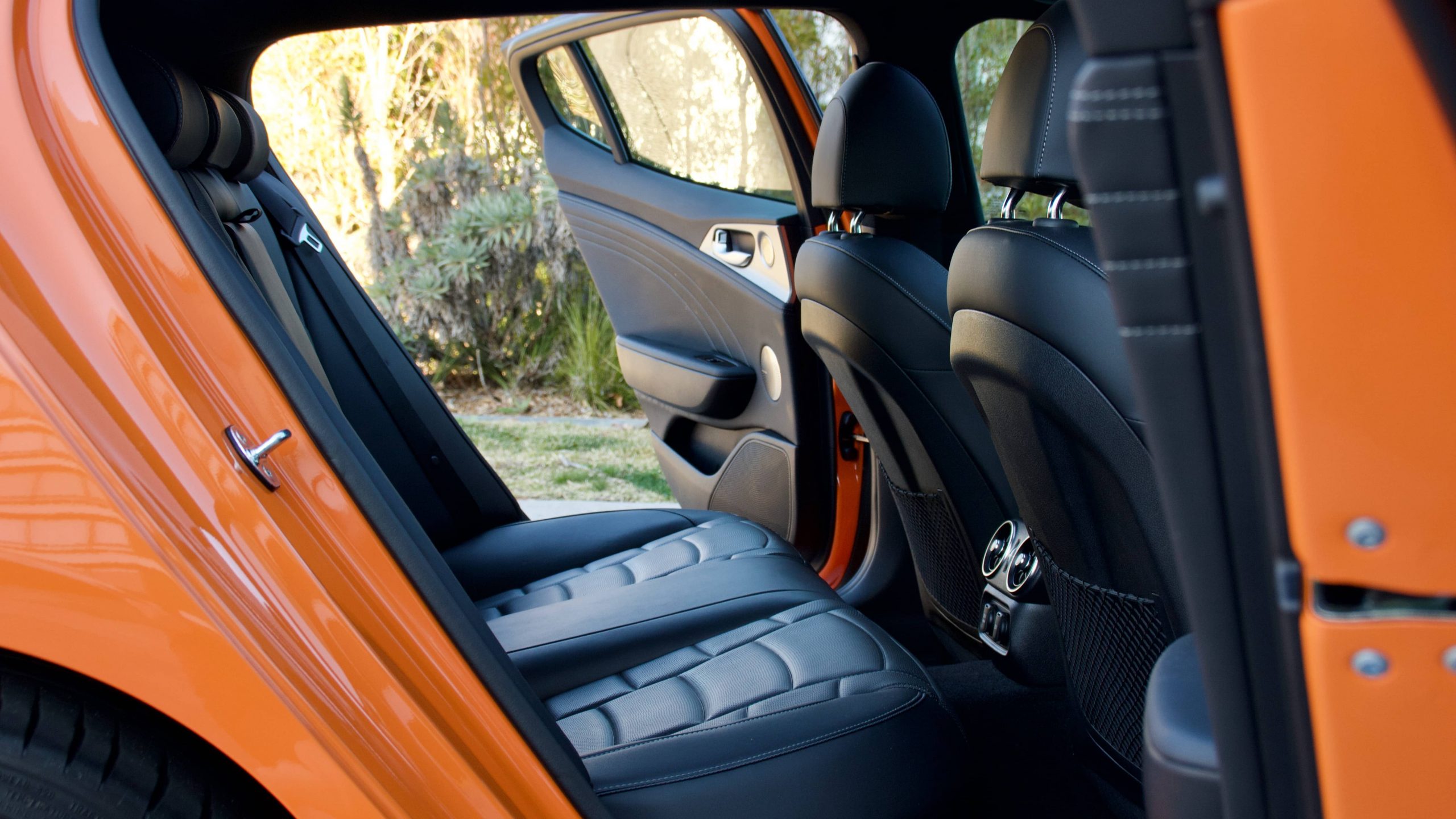
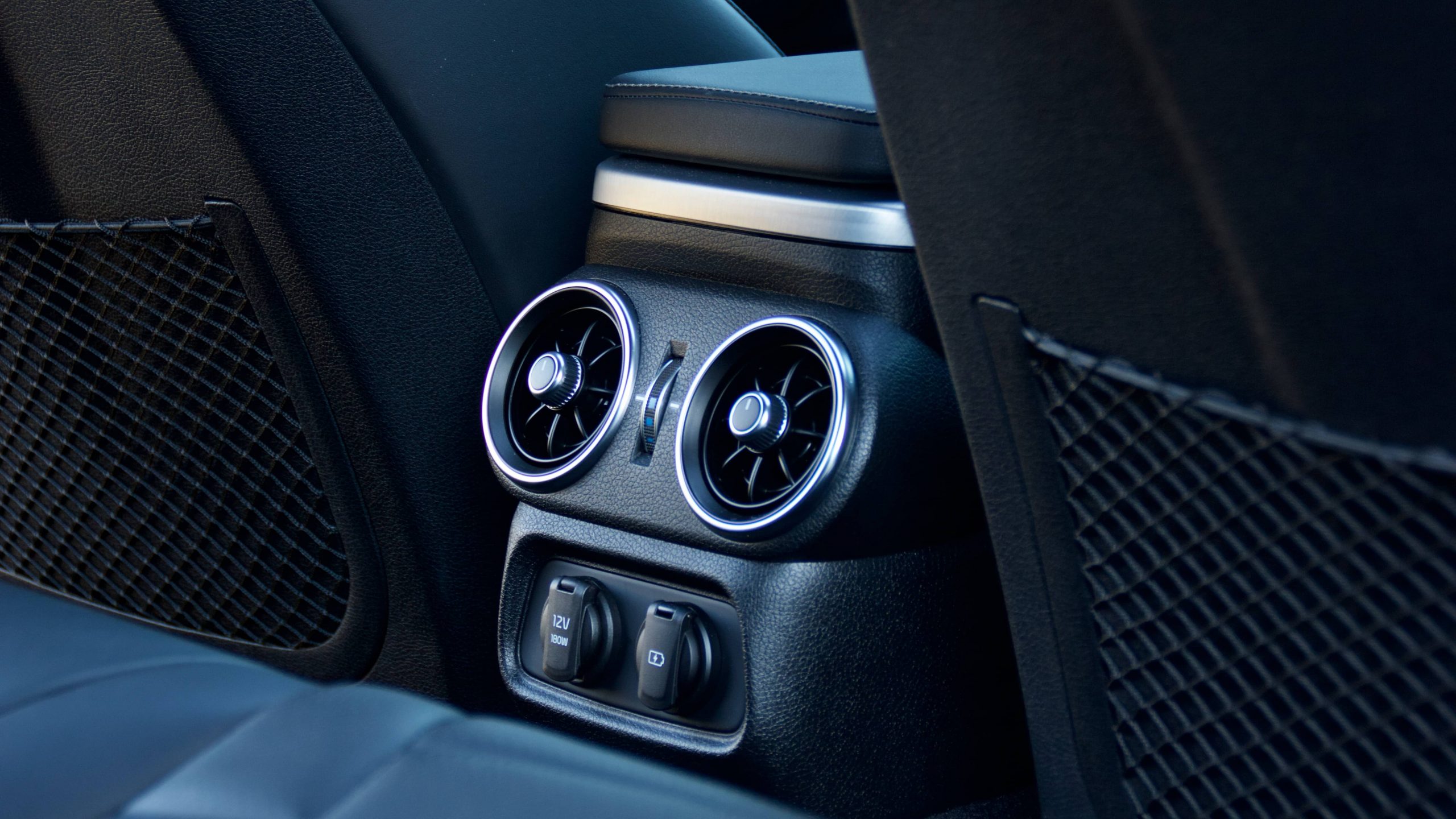
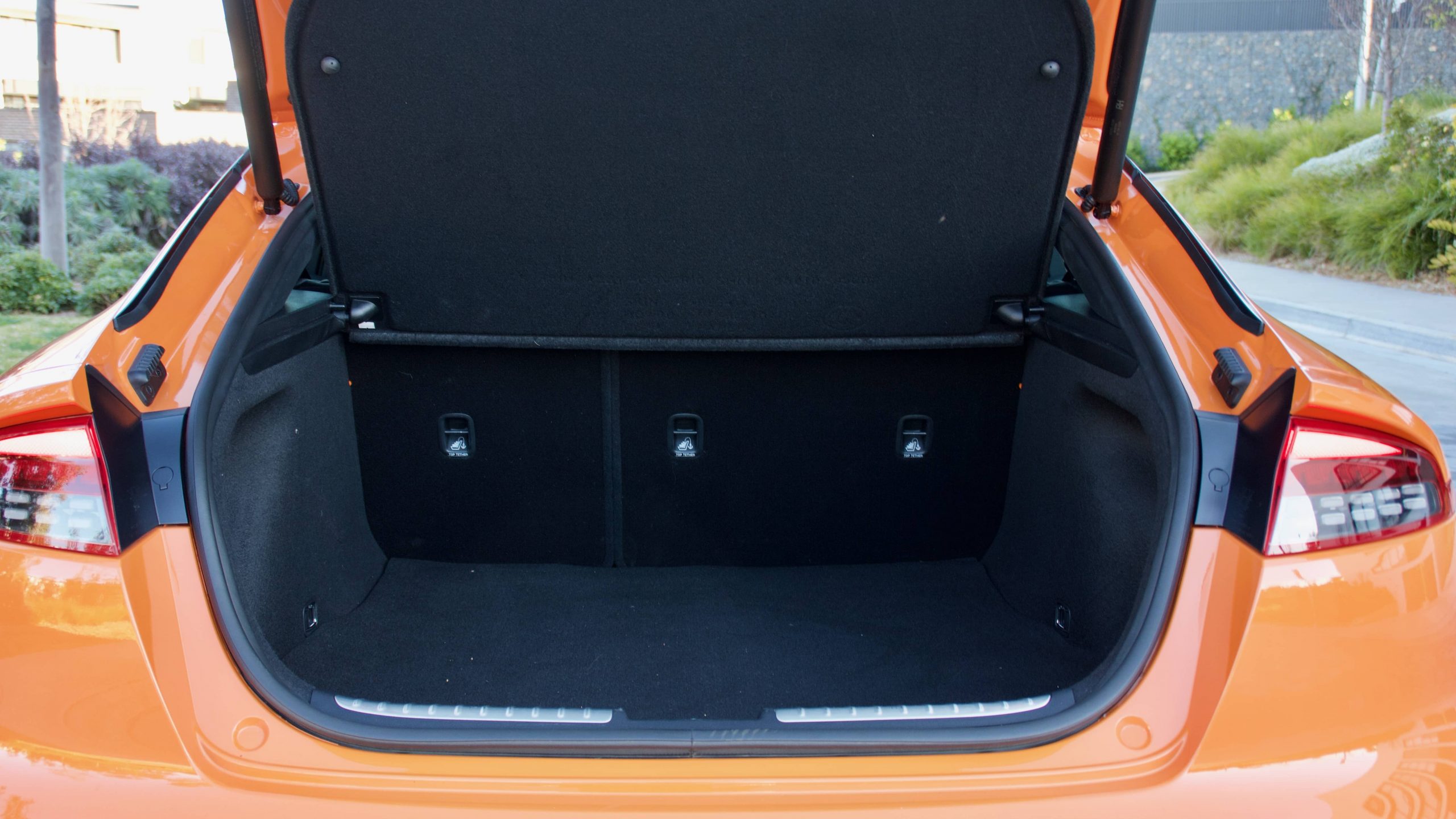
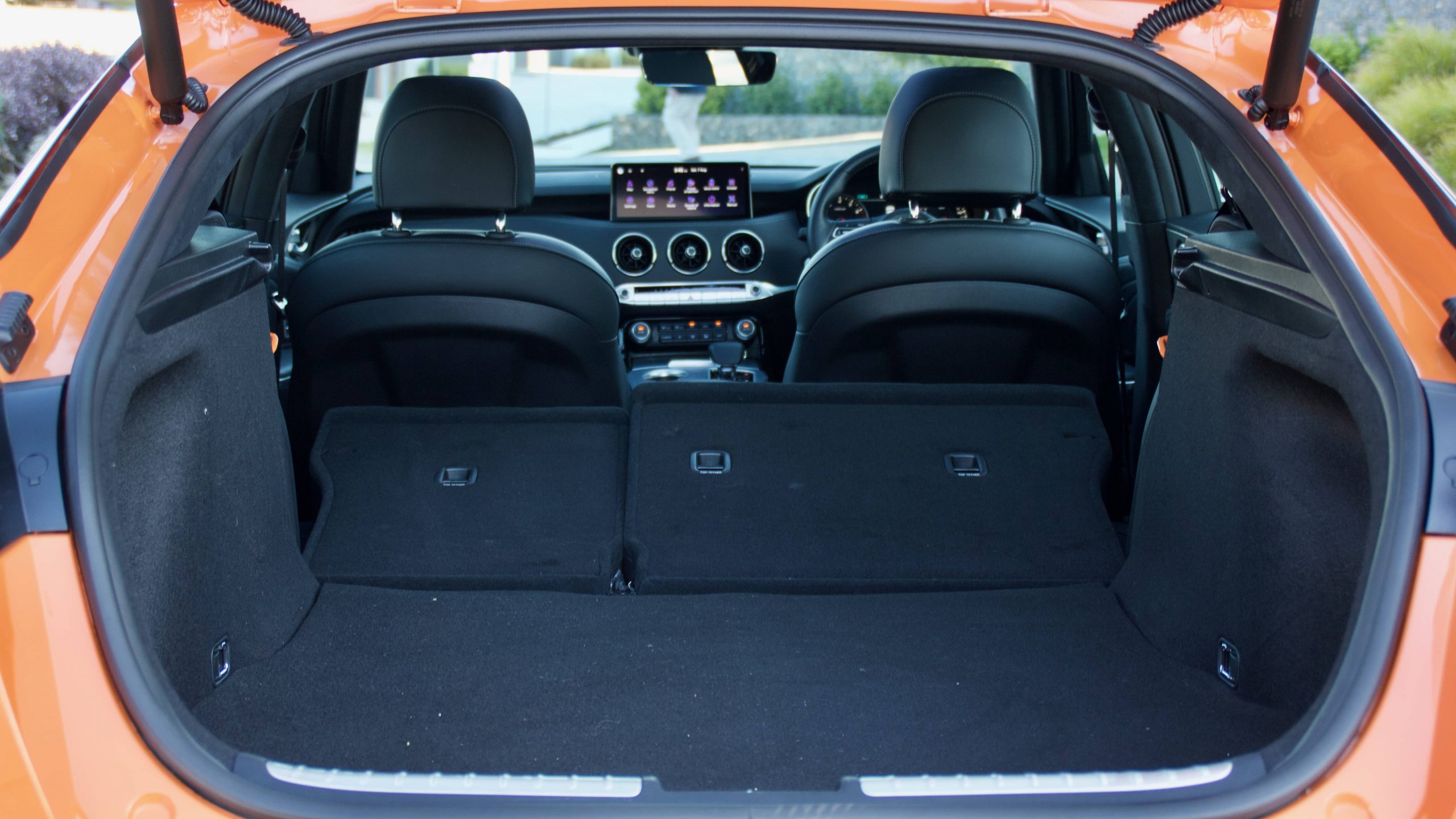
I’m driving a 2019 330S. Economy around town is in the 12-13L/100km range. Open road economy is brilliant. It often drops into the 6’s. 6.8-6.9L/100kms. That’s on the Hume.
Previous cars include SSVs and XR6T’s. They didn’t run to 100kmh in under 5 secs. The Stinger is quicker.
Glad to hear Kia has sharpened up the auto. If that’s been done with software, I hope I get it at the next service.
PITA Issues. Intrusive Lane Keep Assist. Glad it can be switched off. The Smart Cruise is Dumb (IMHO). Glad it can be turned off and wish I could turn it off permanently. The hard edges on the centre console and the drivers door are a bit irritating on long drives although not noticeable around town.